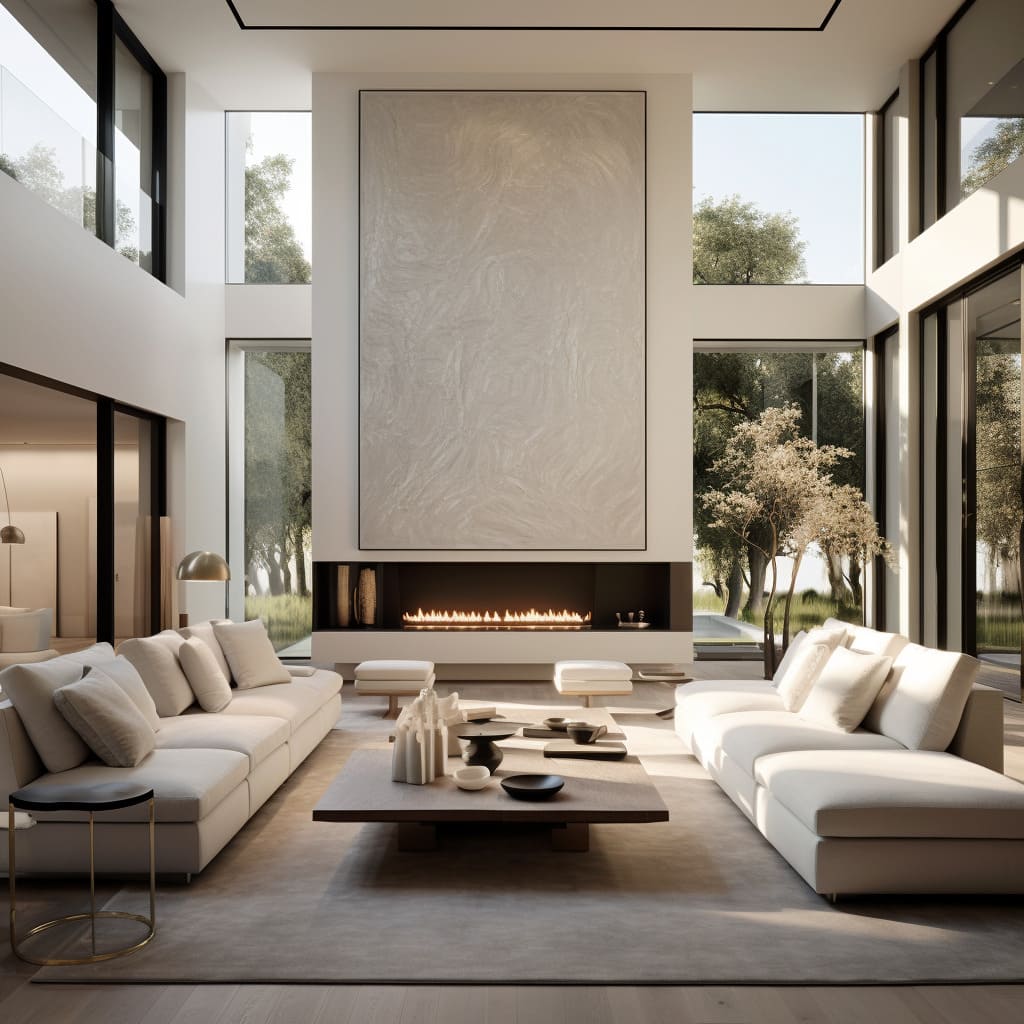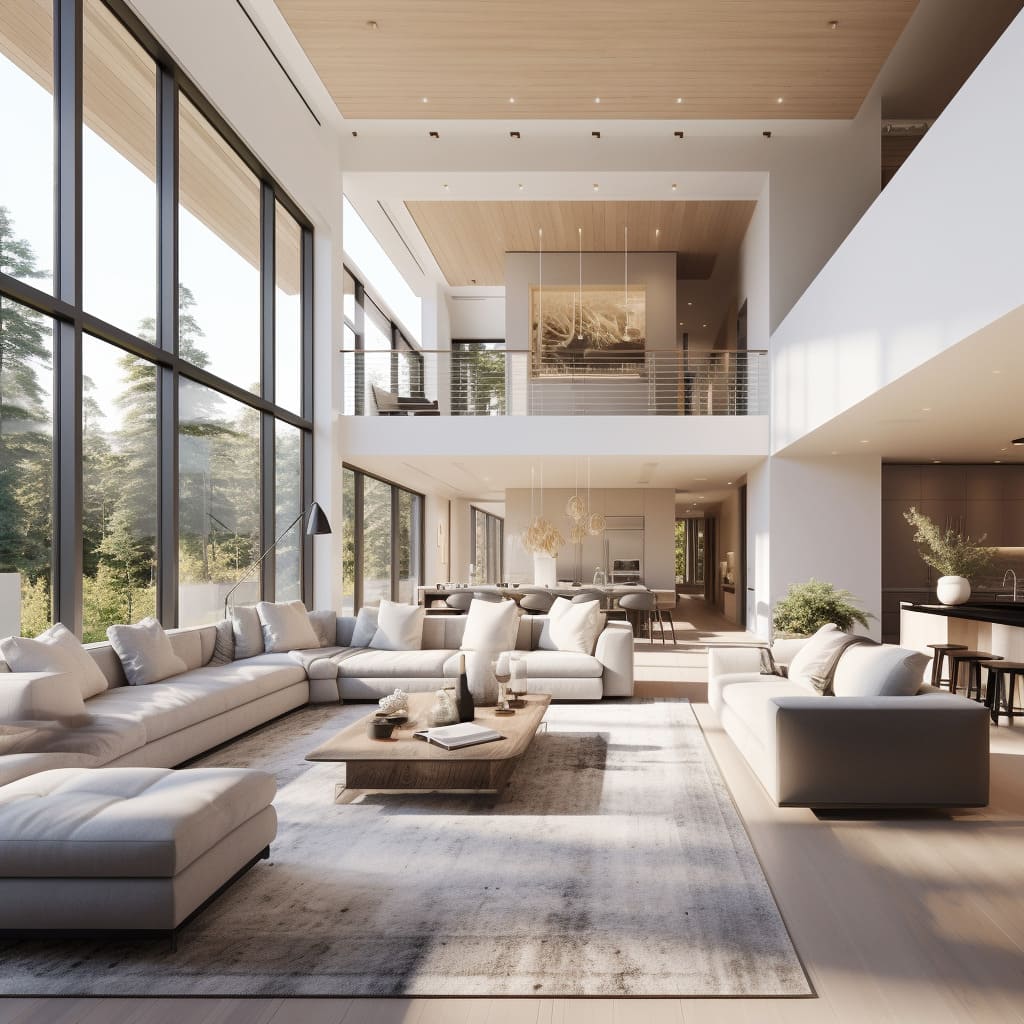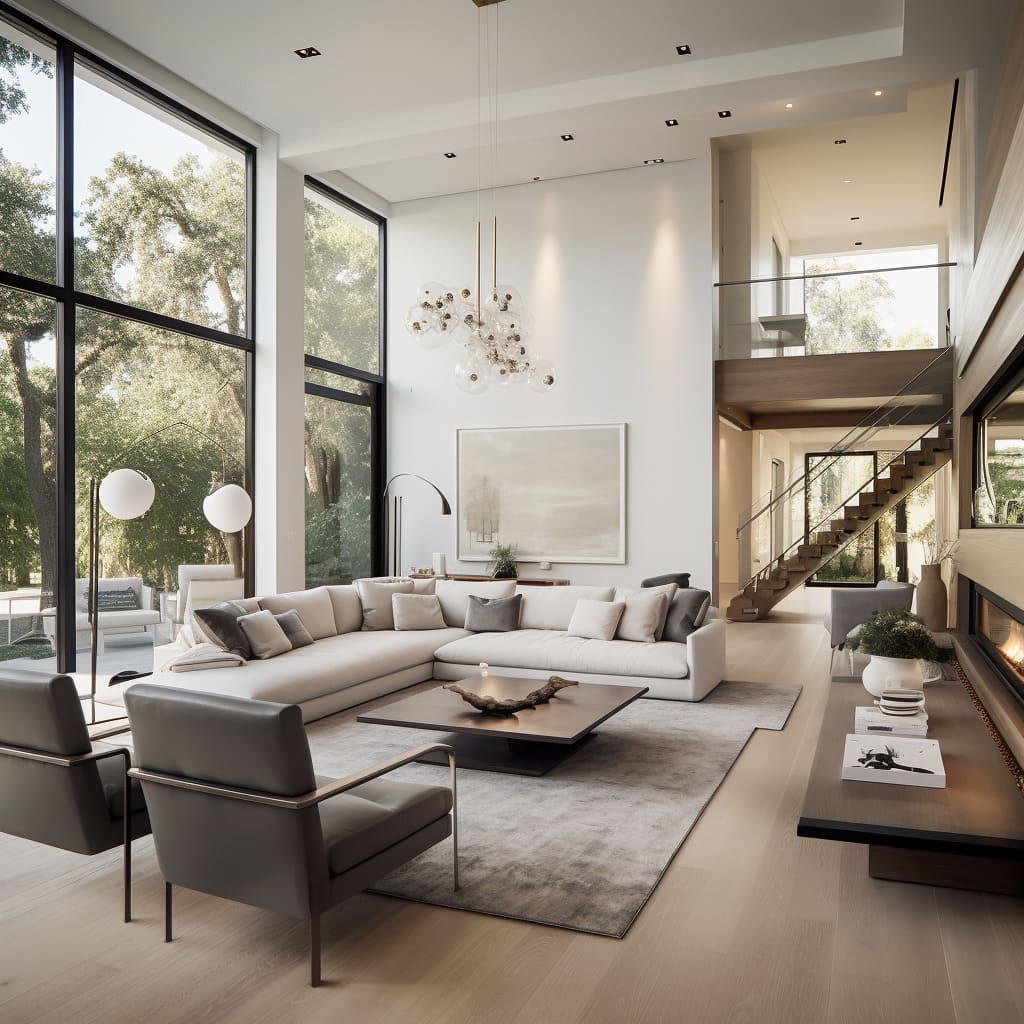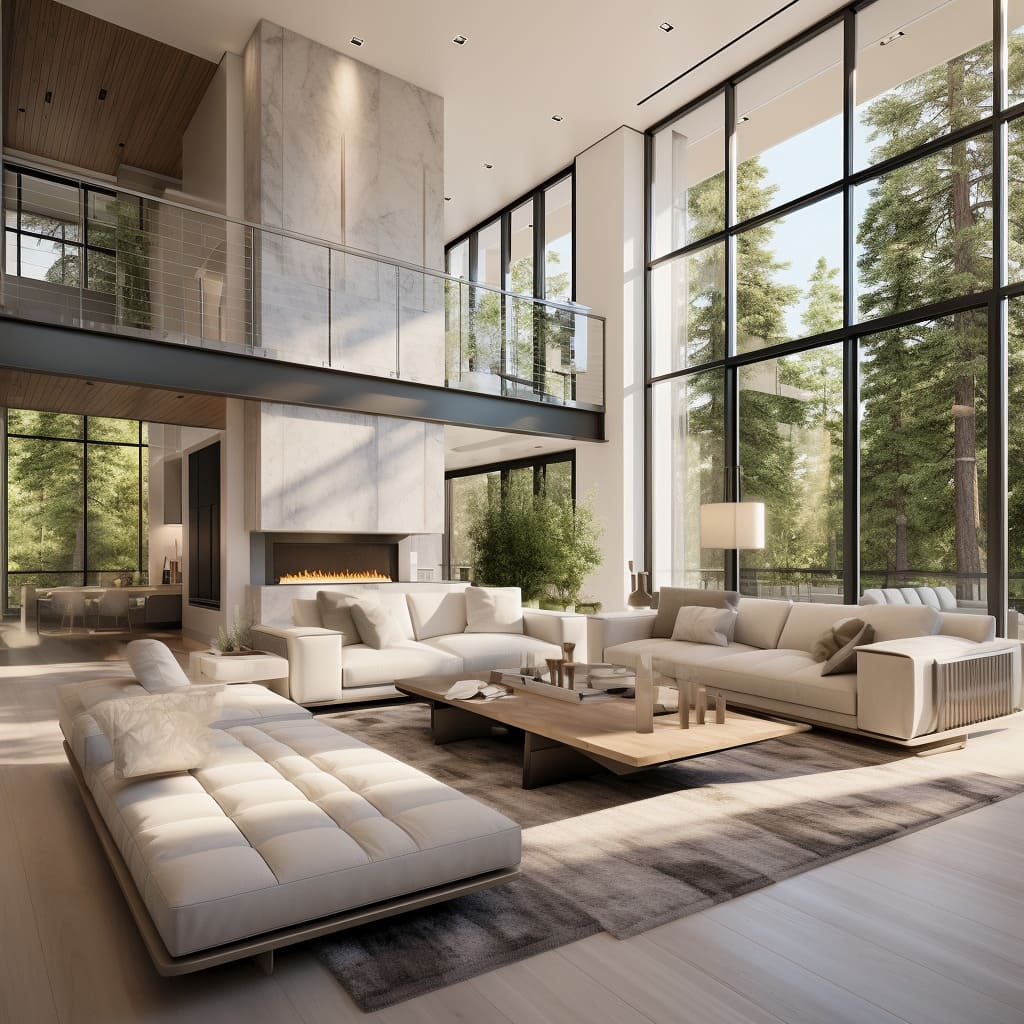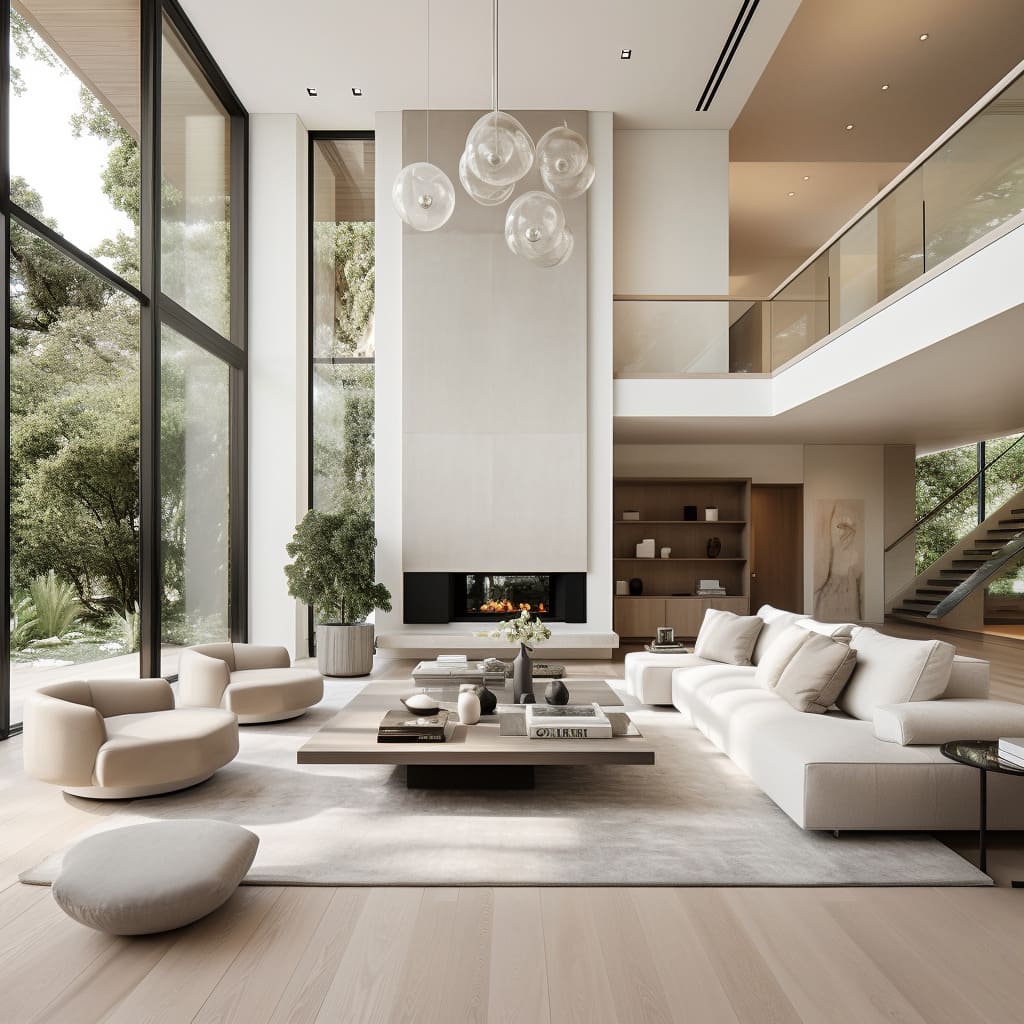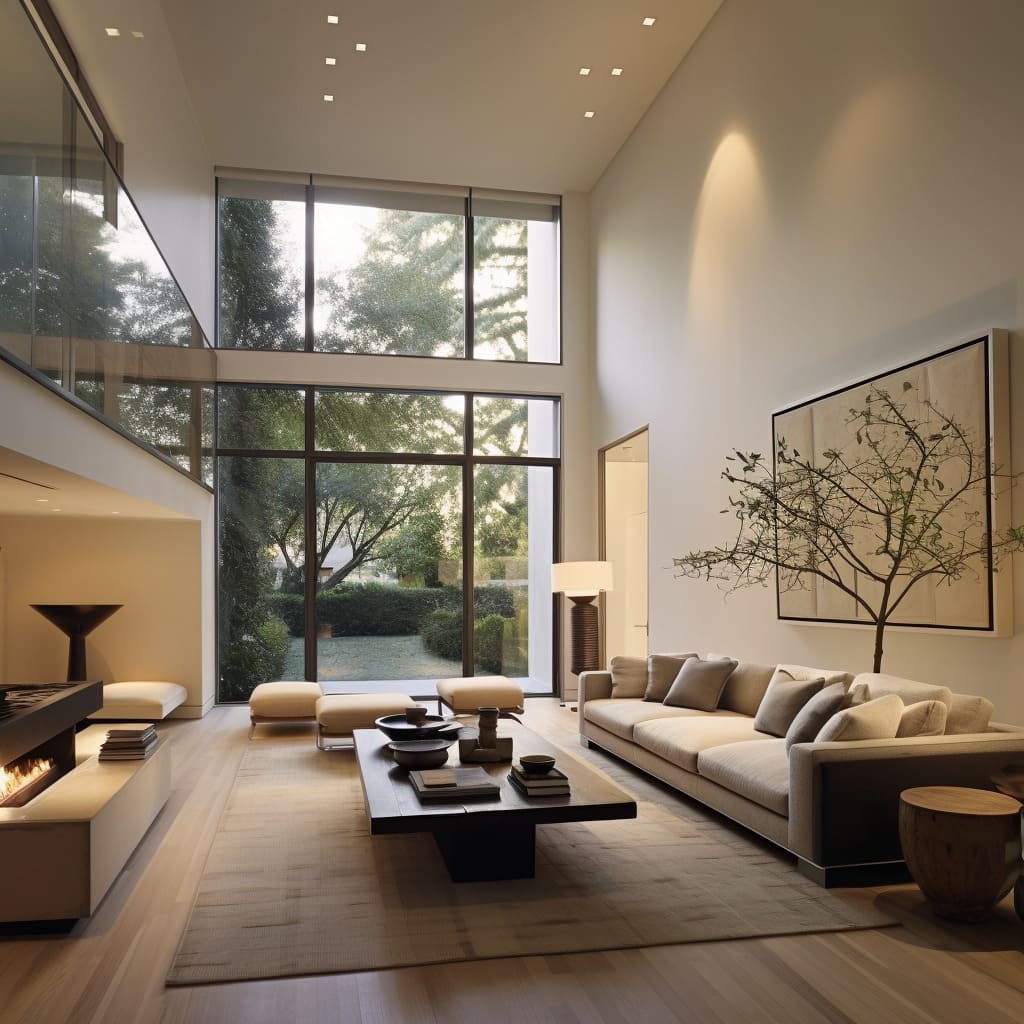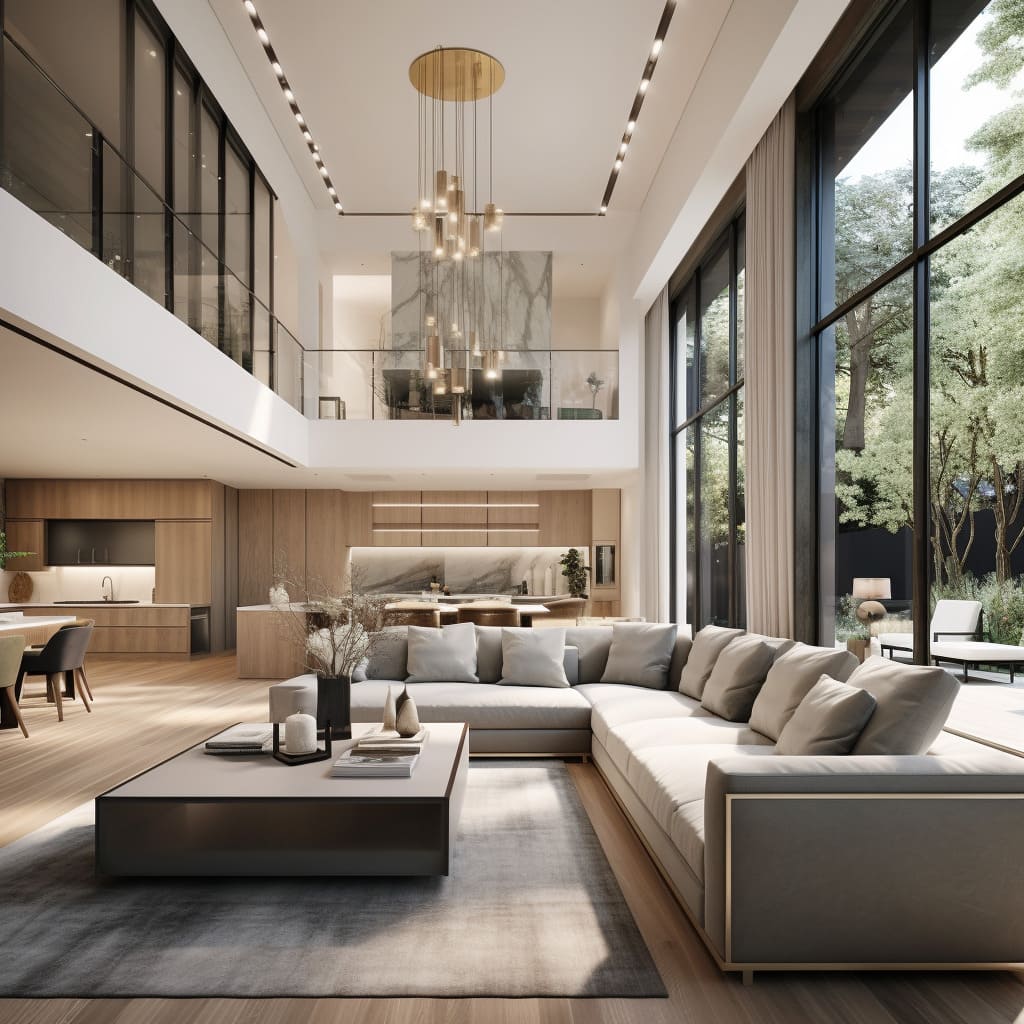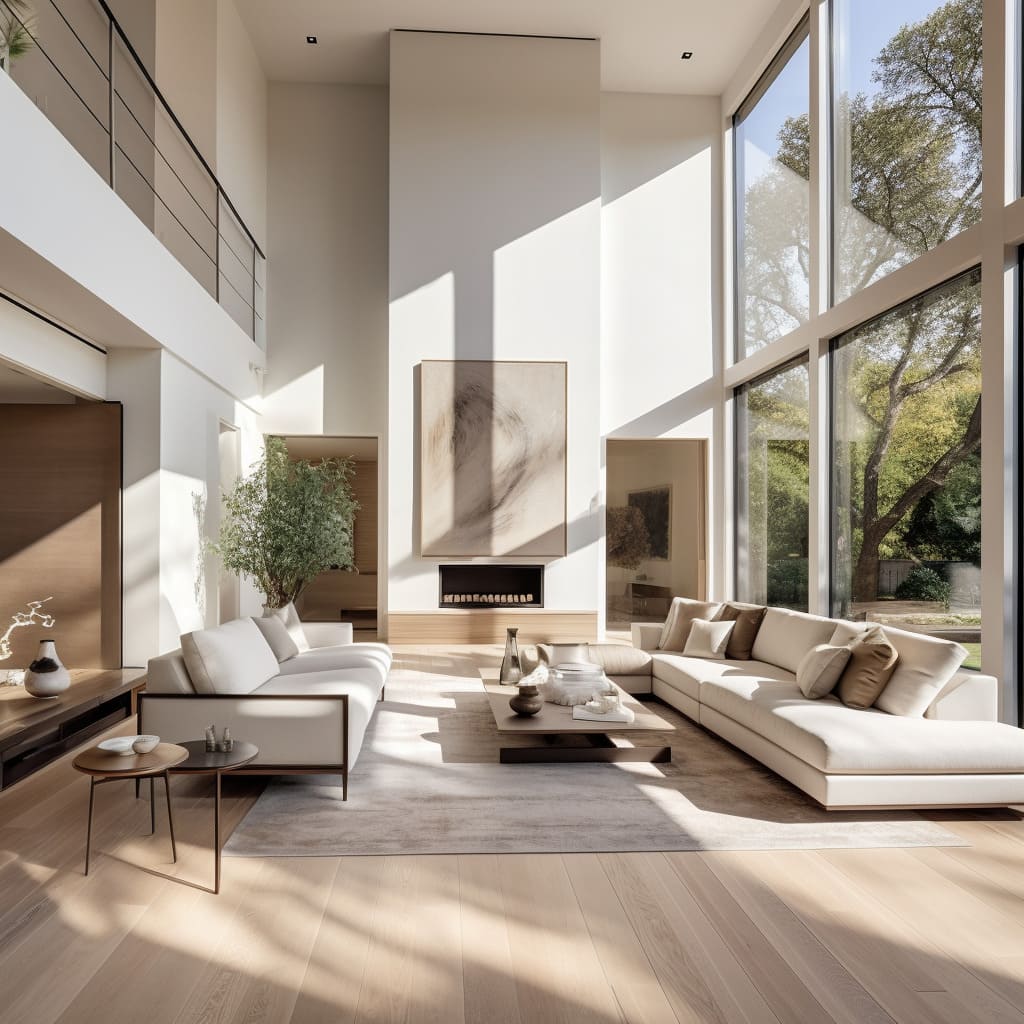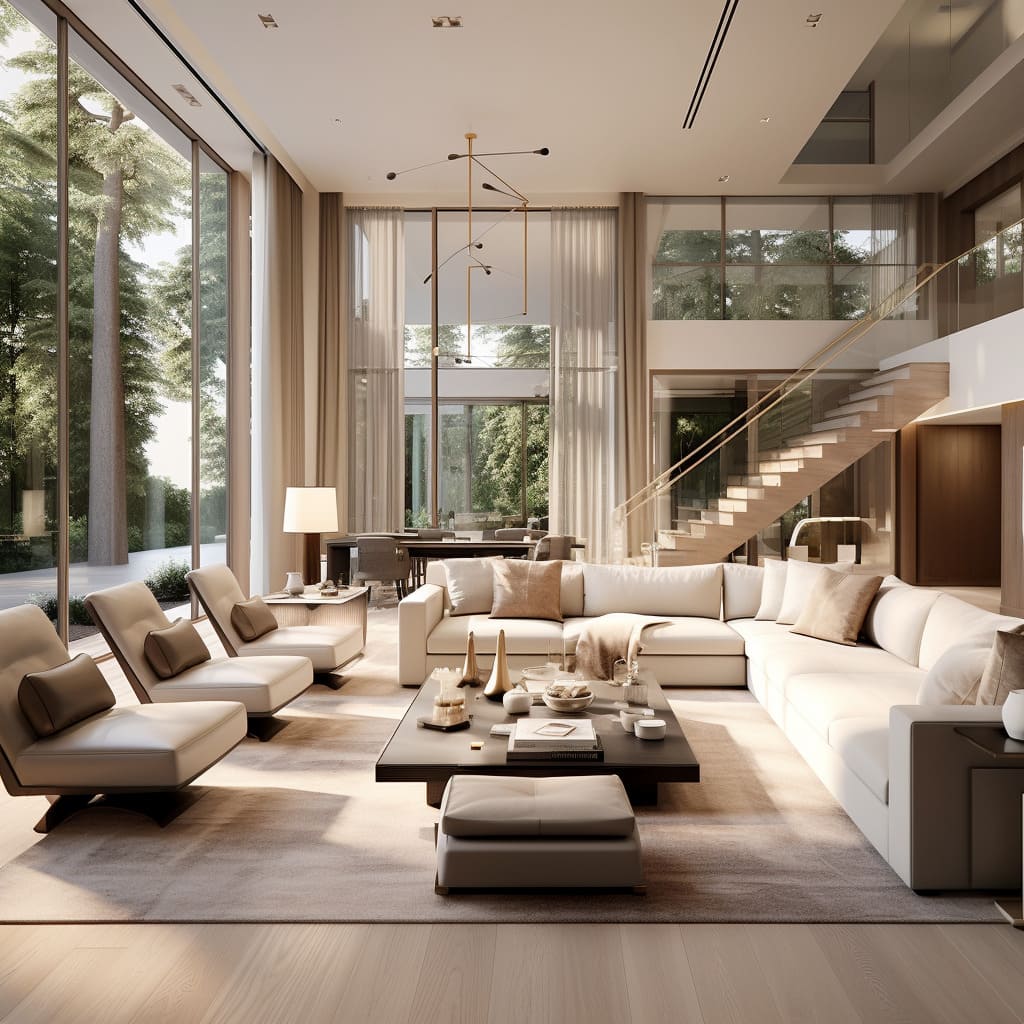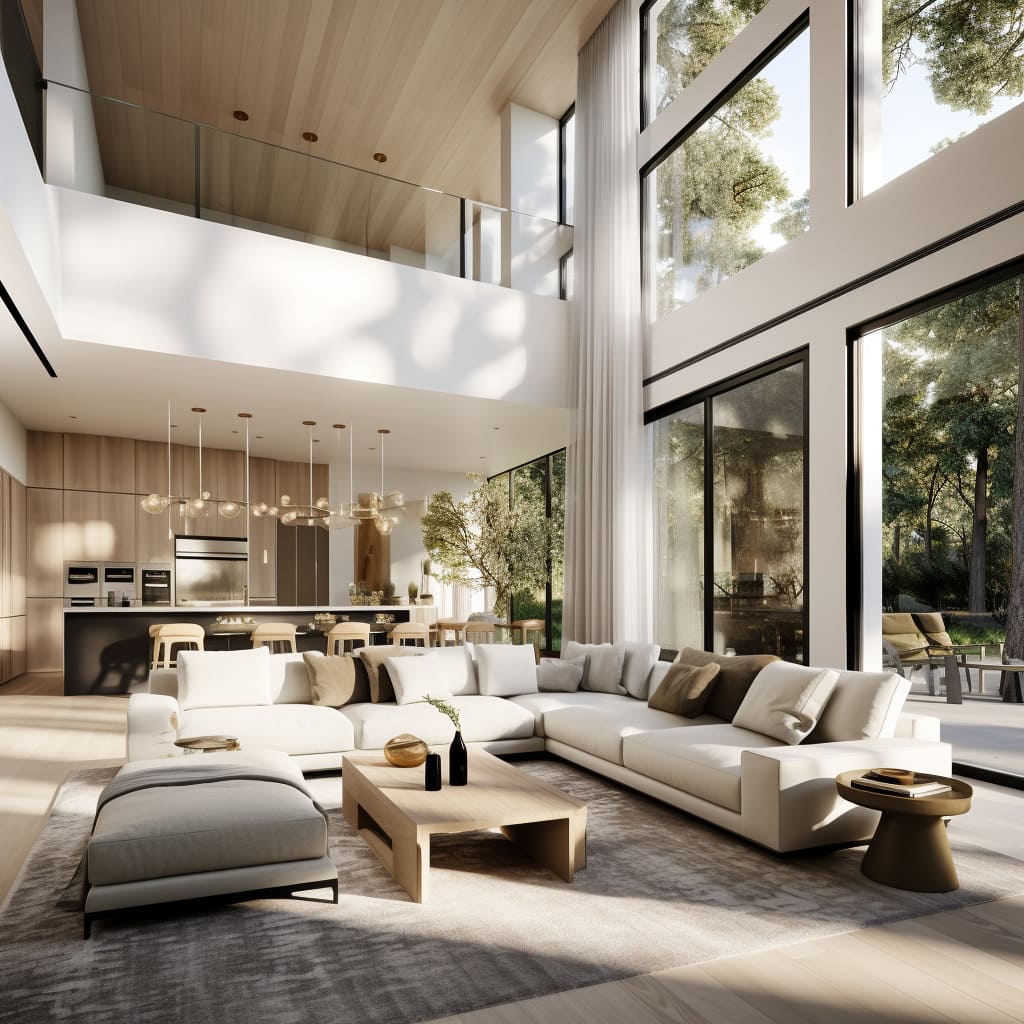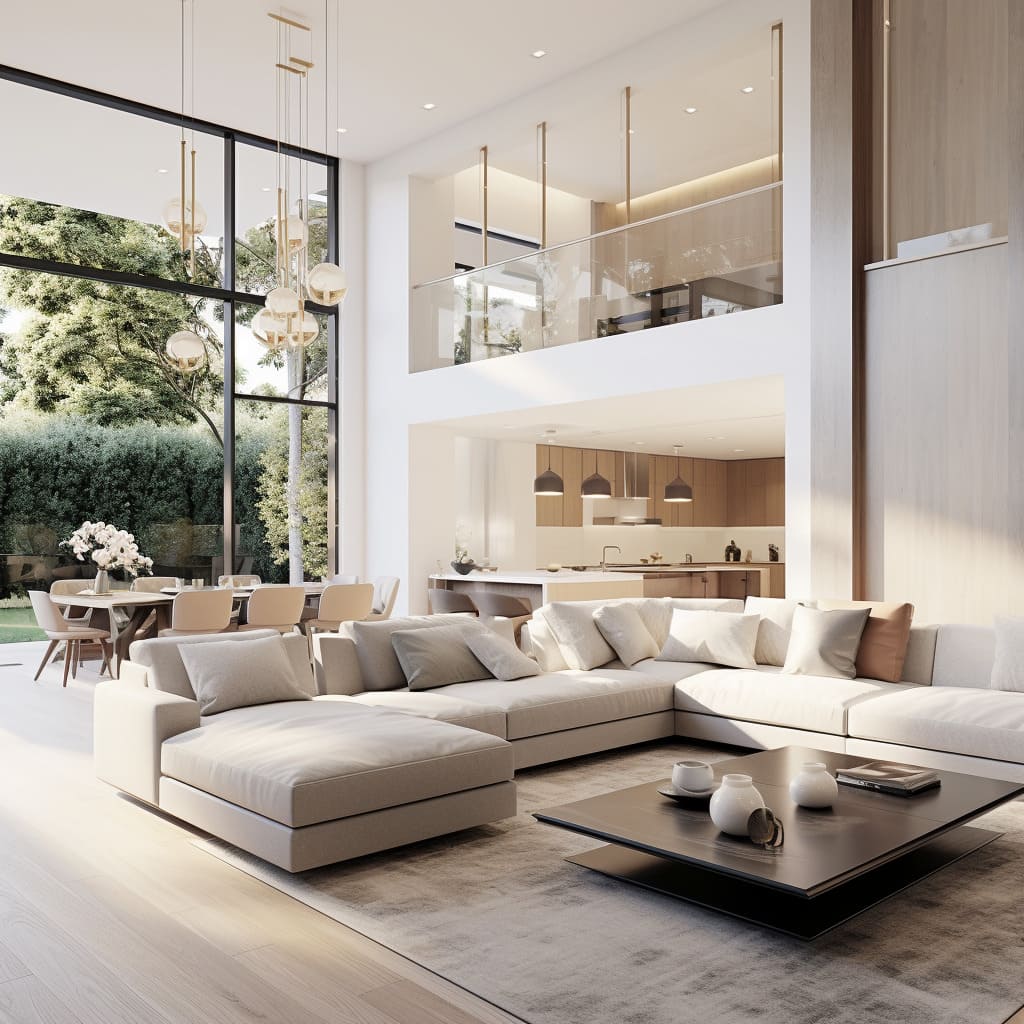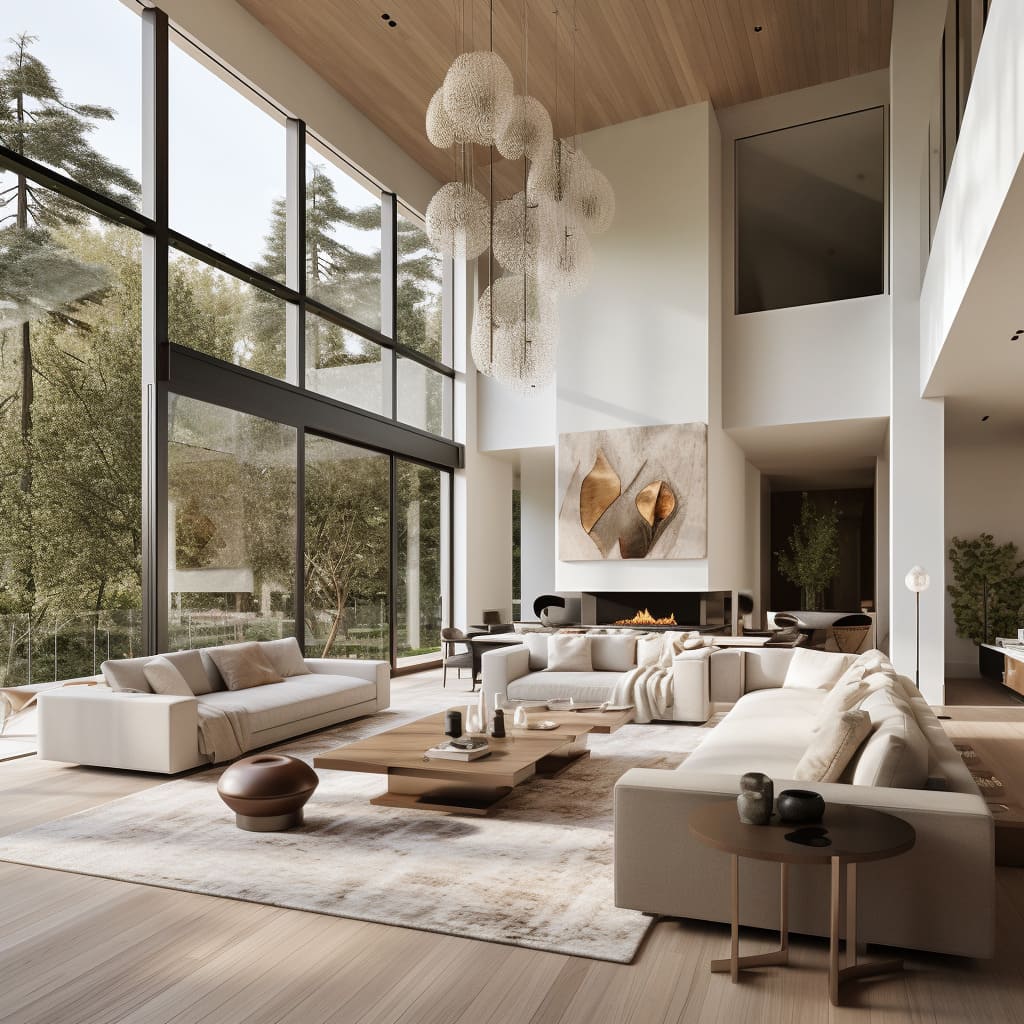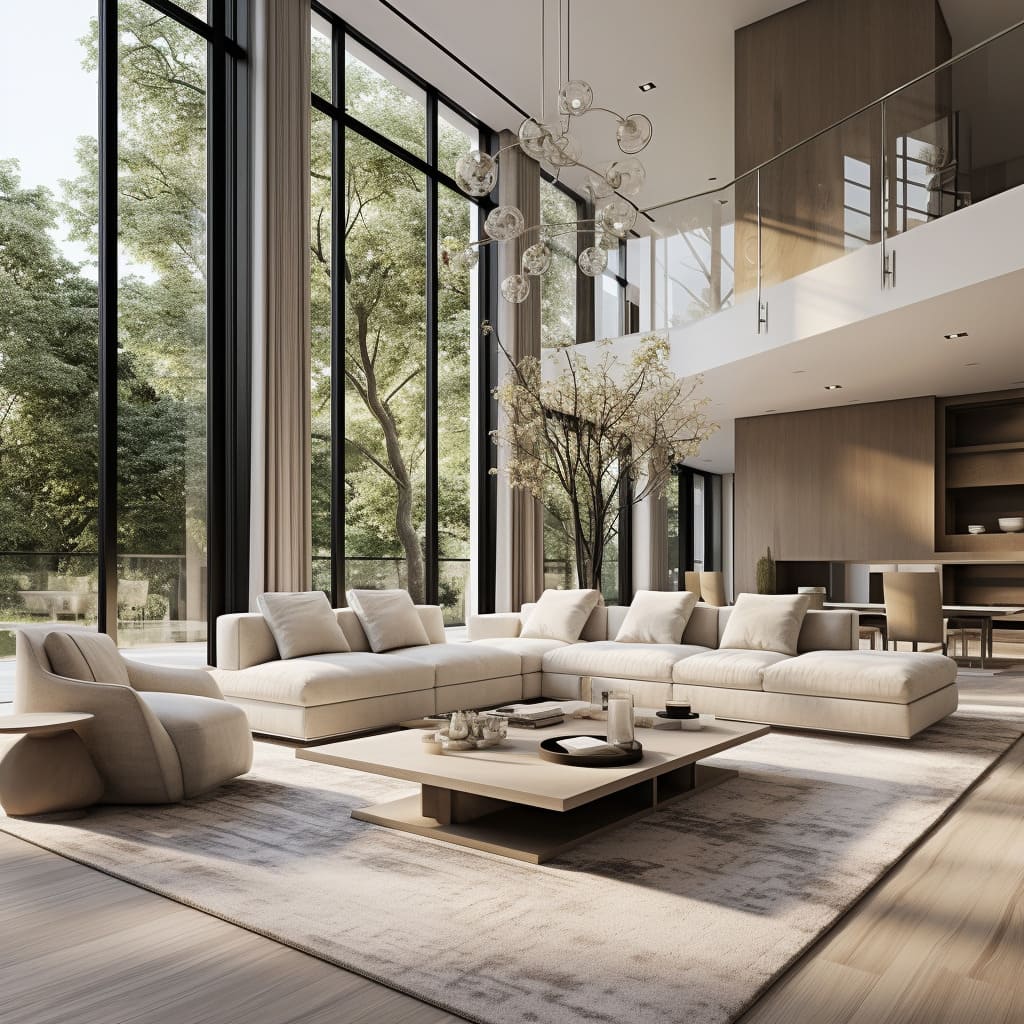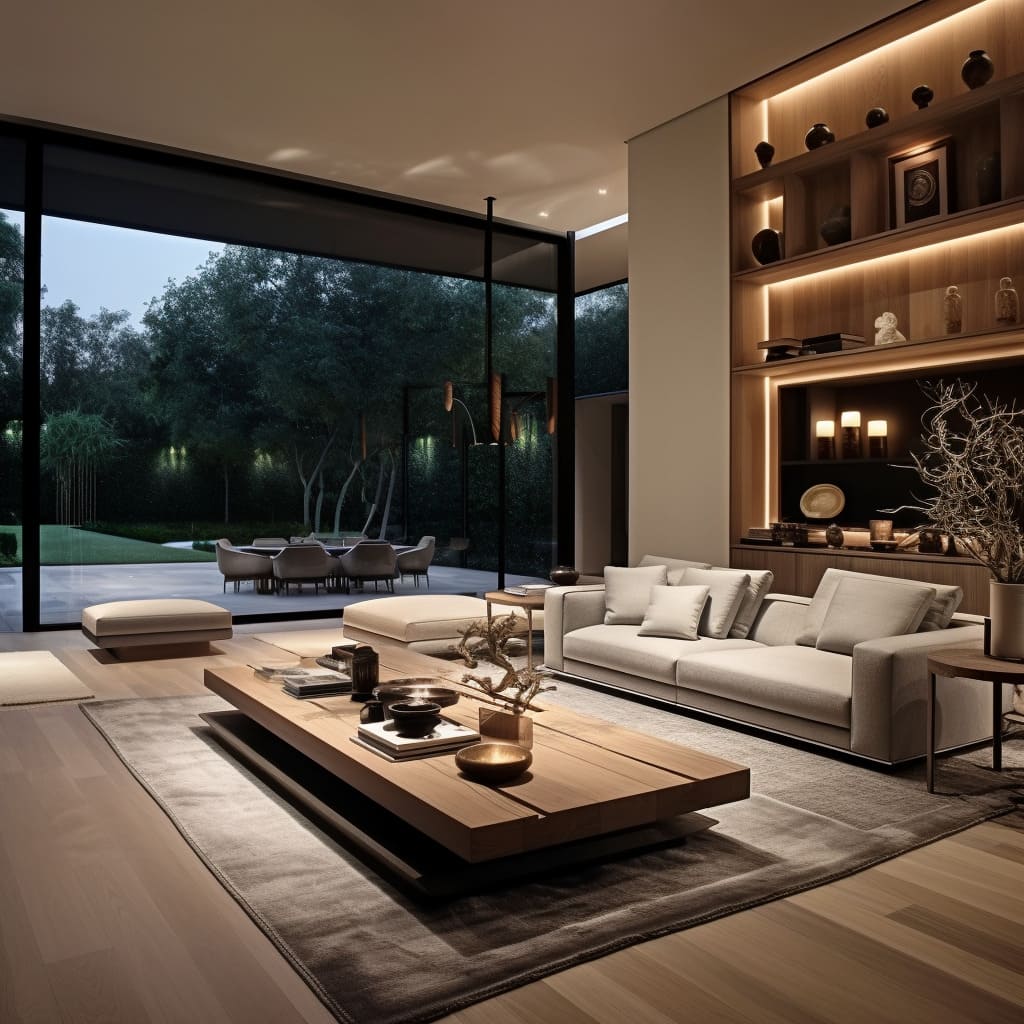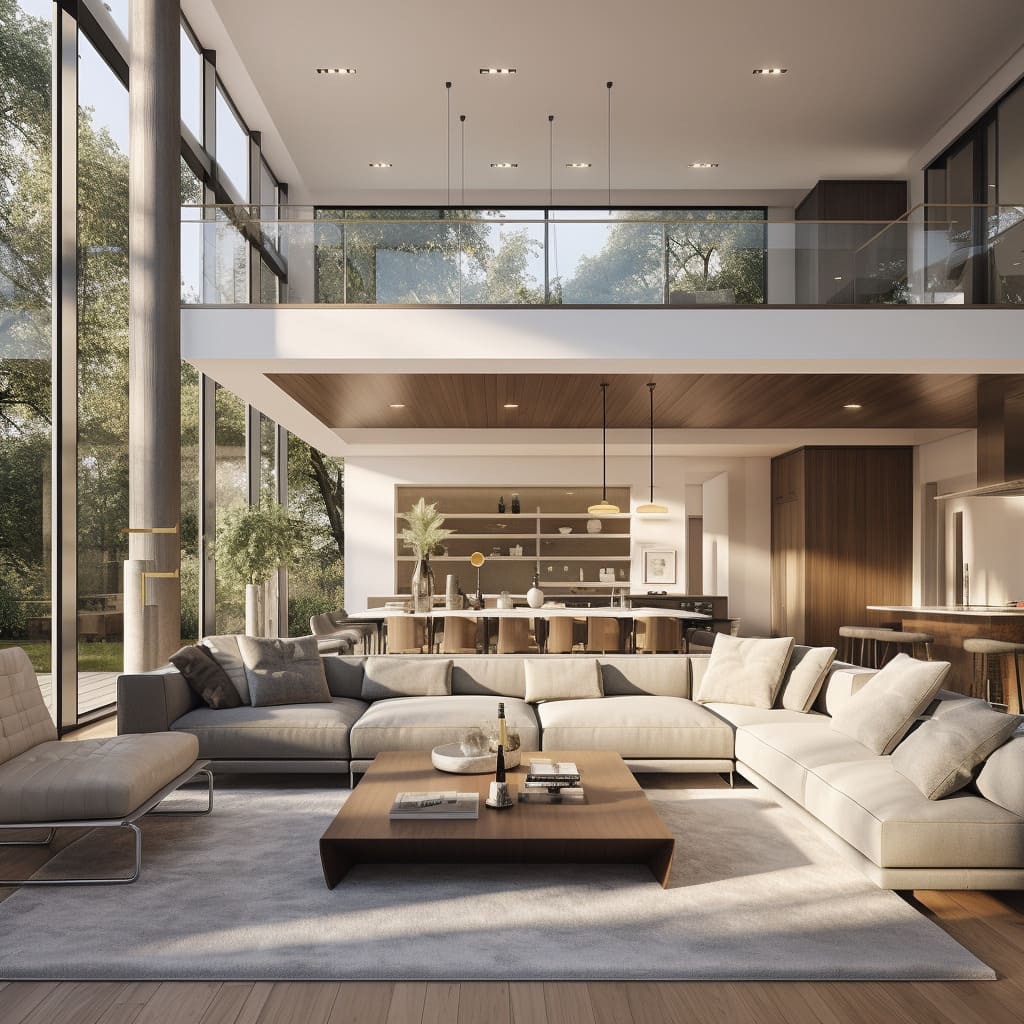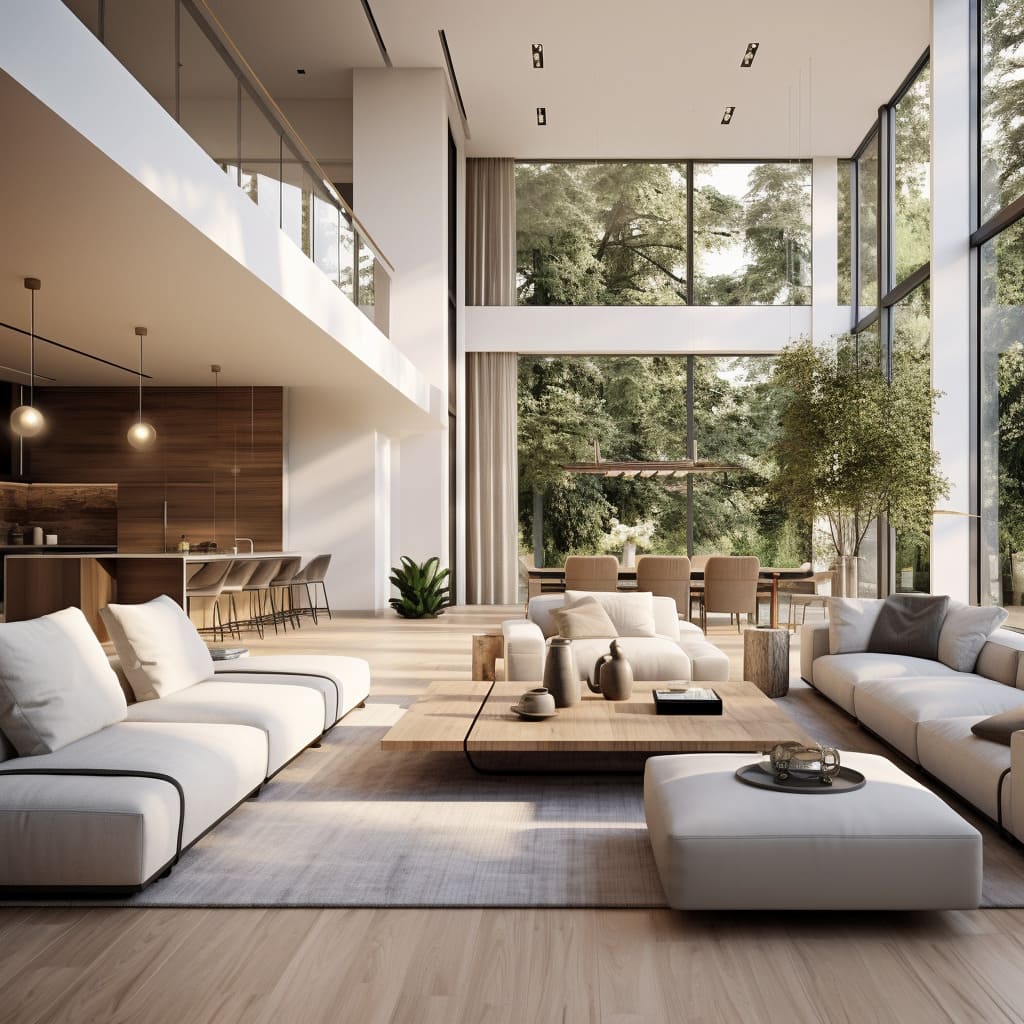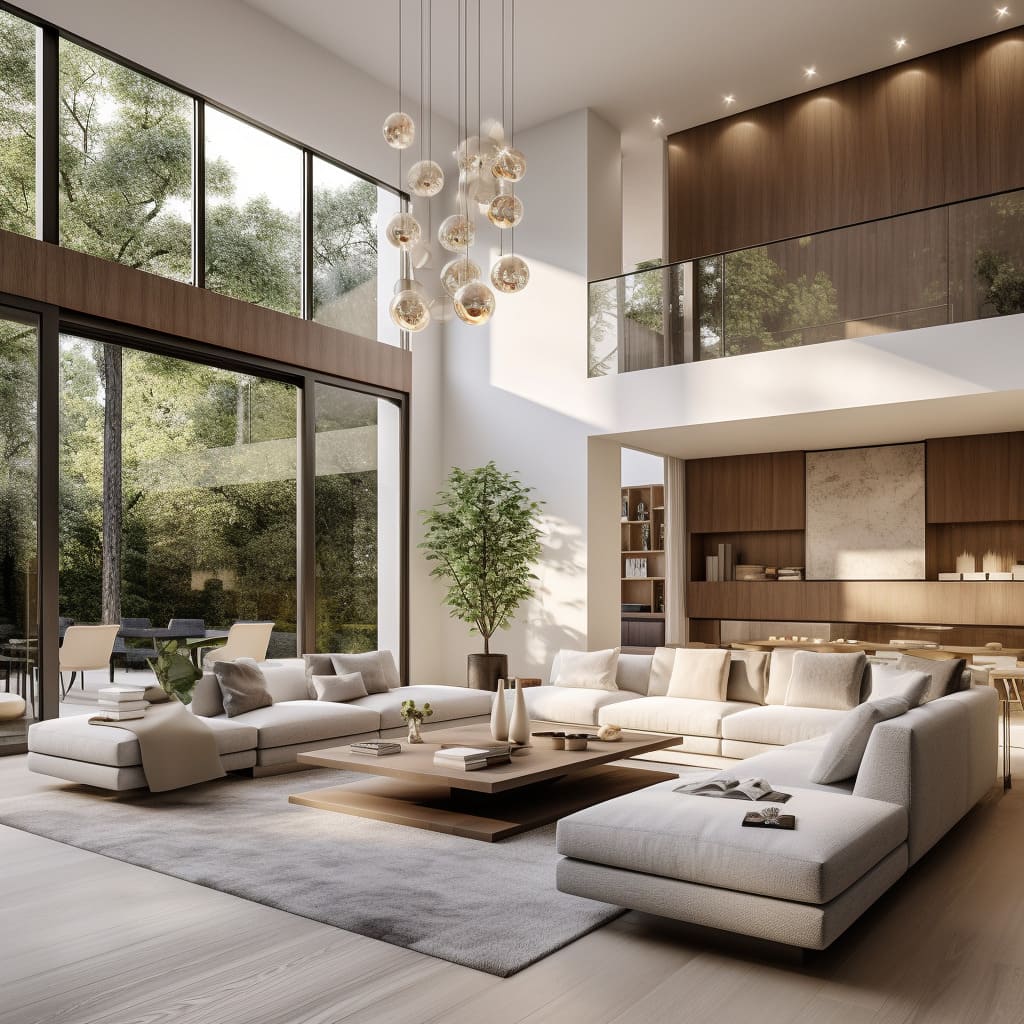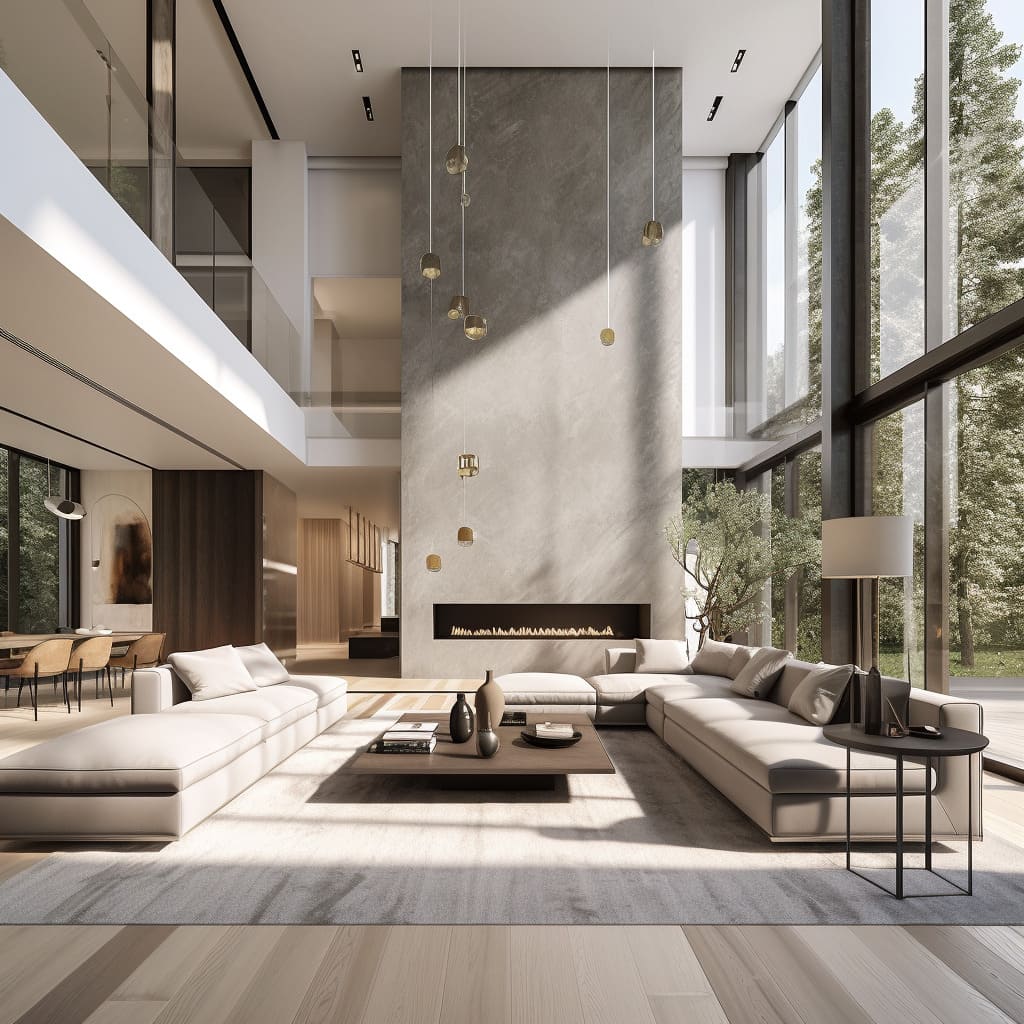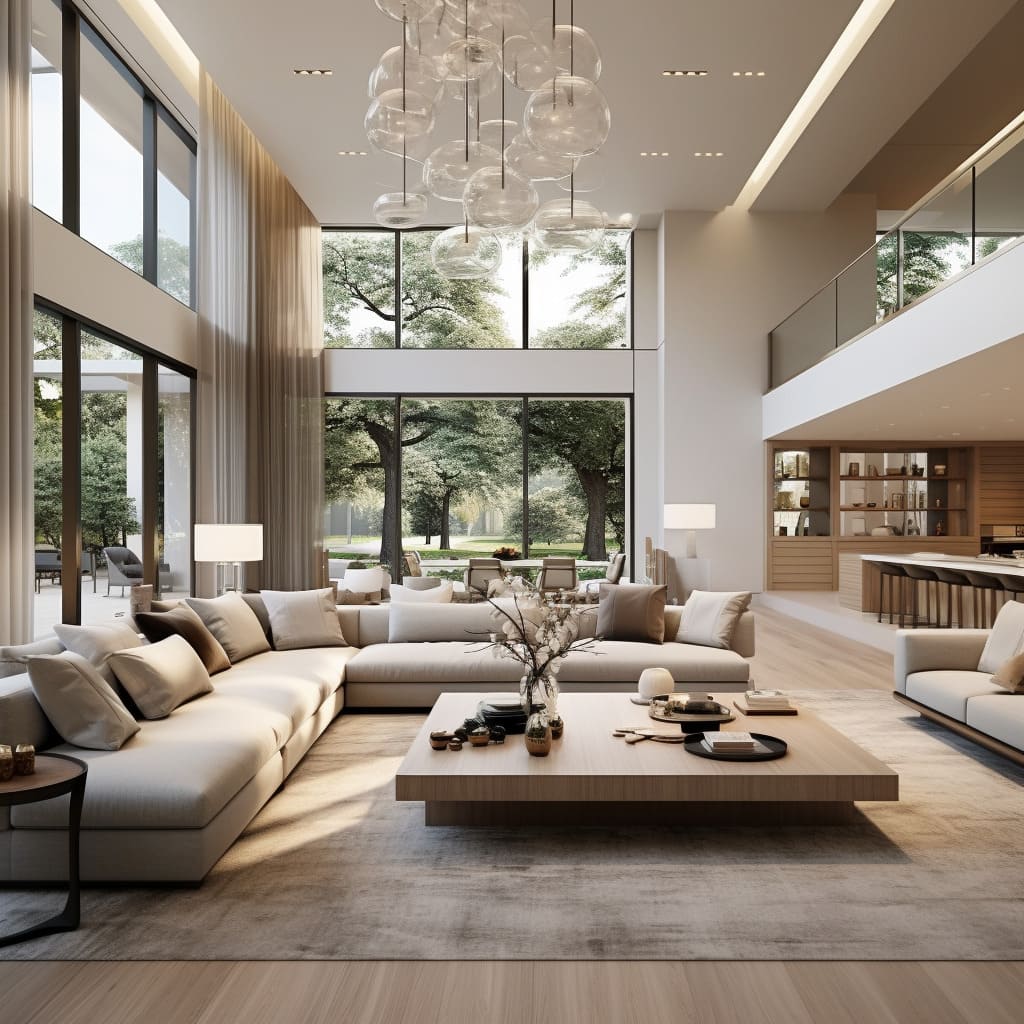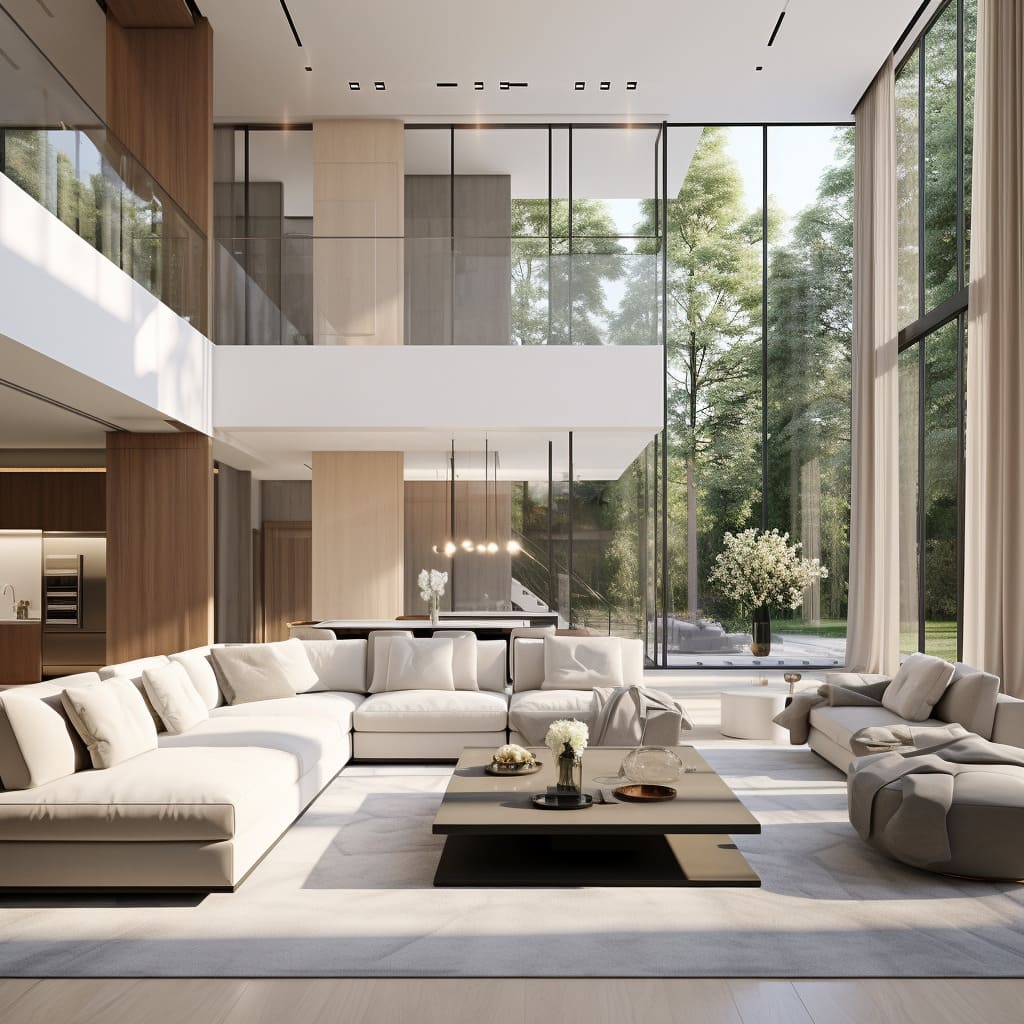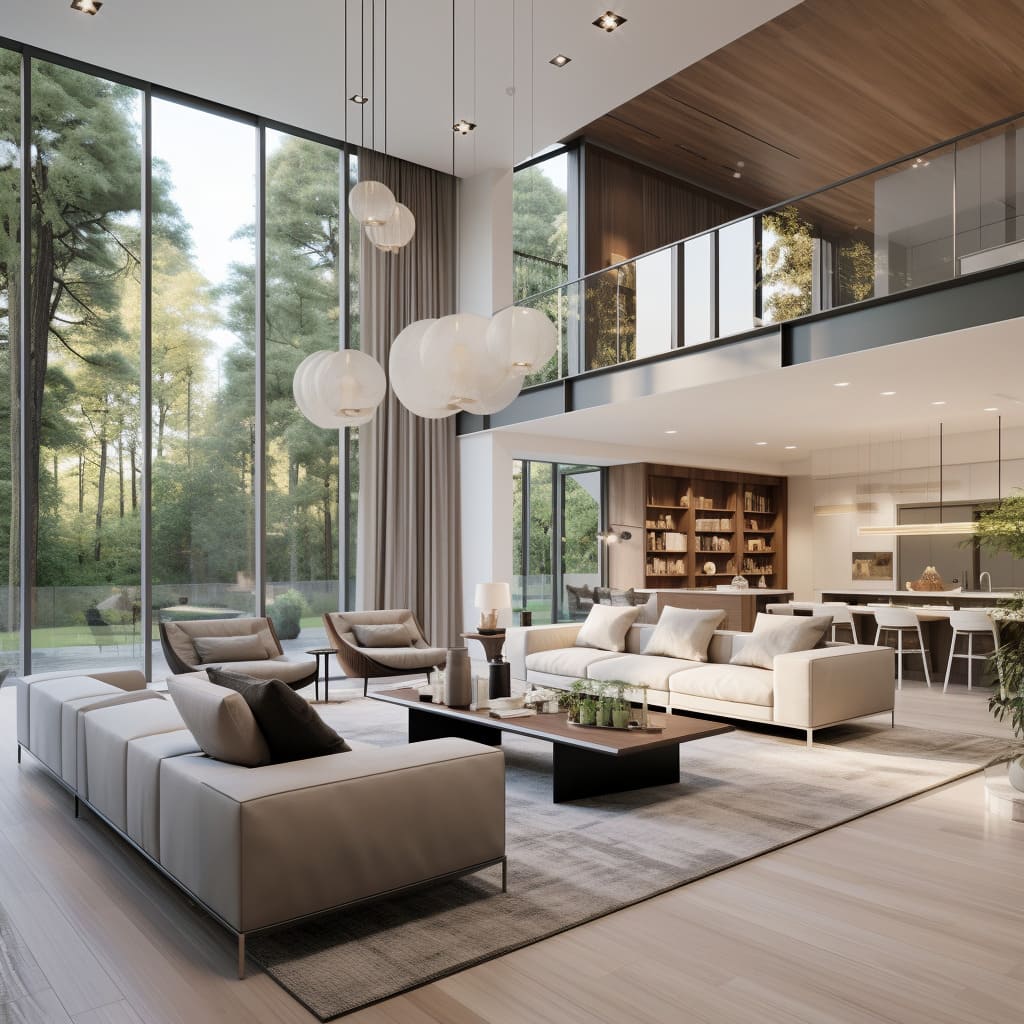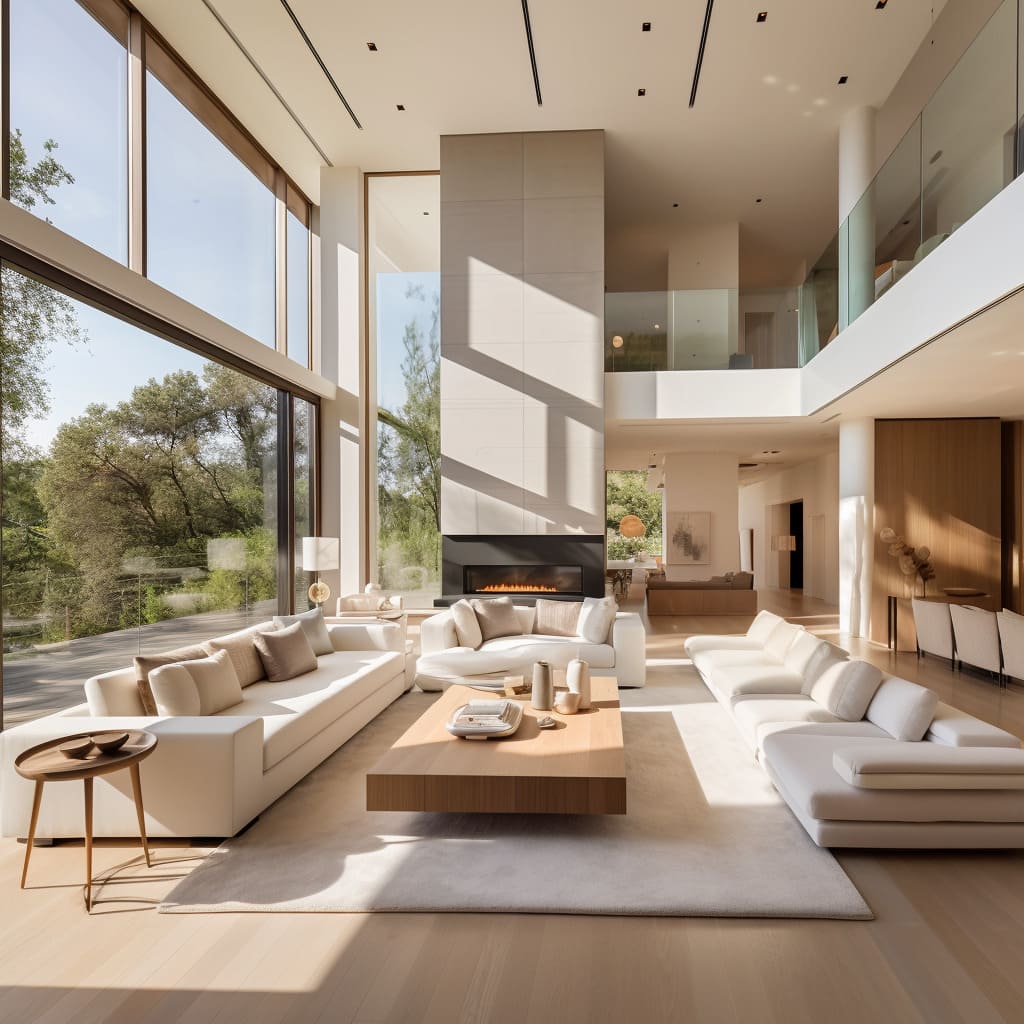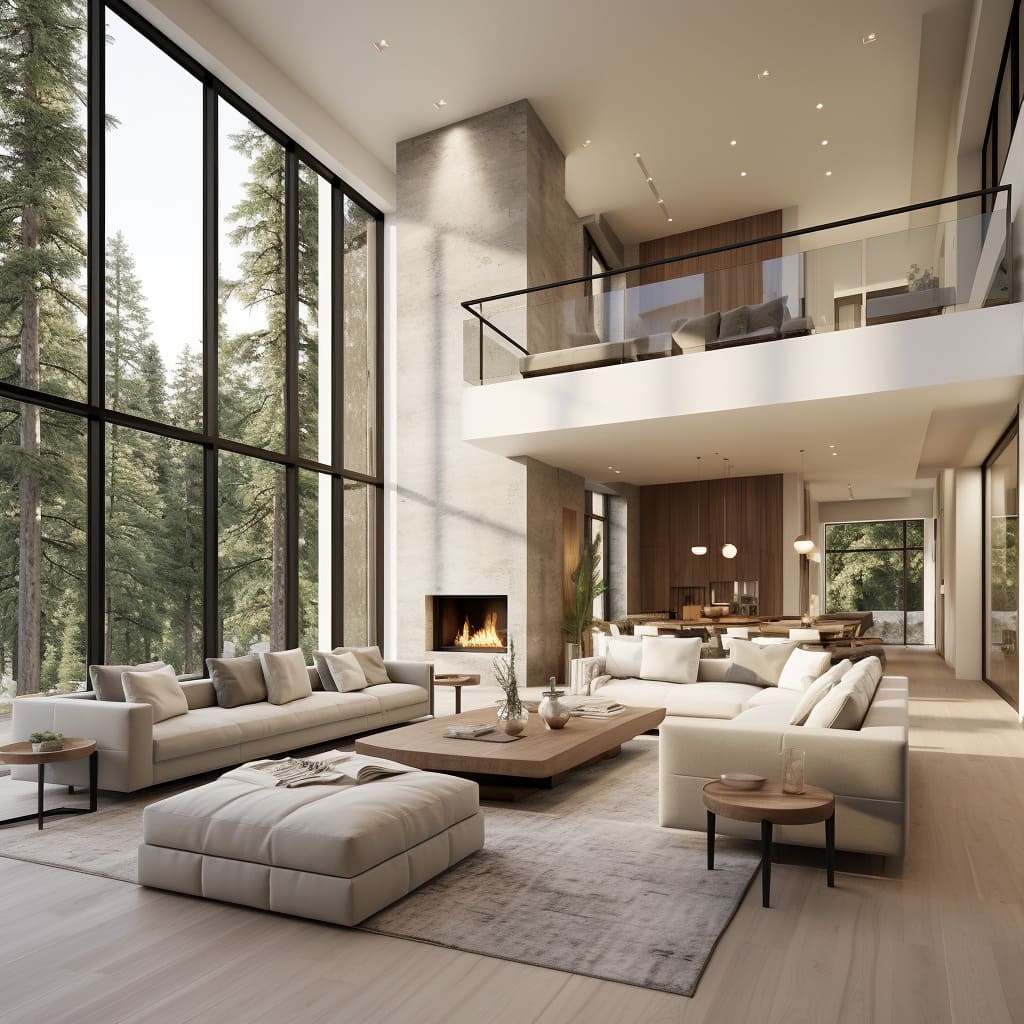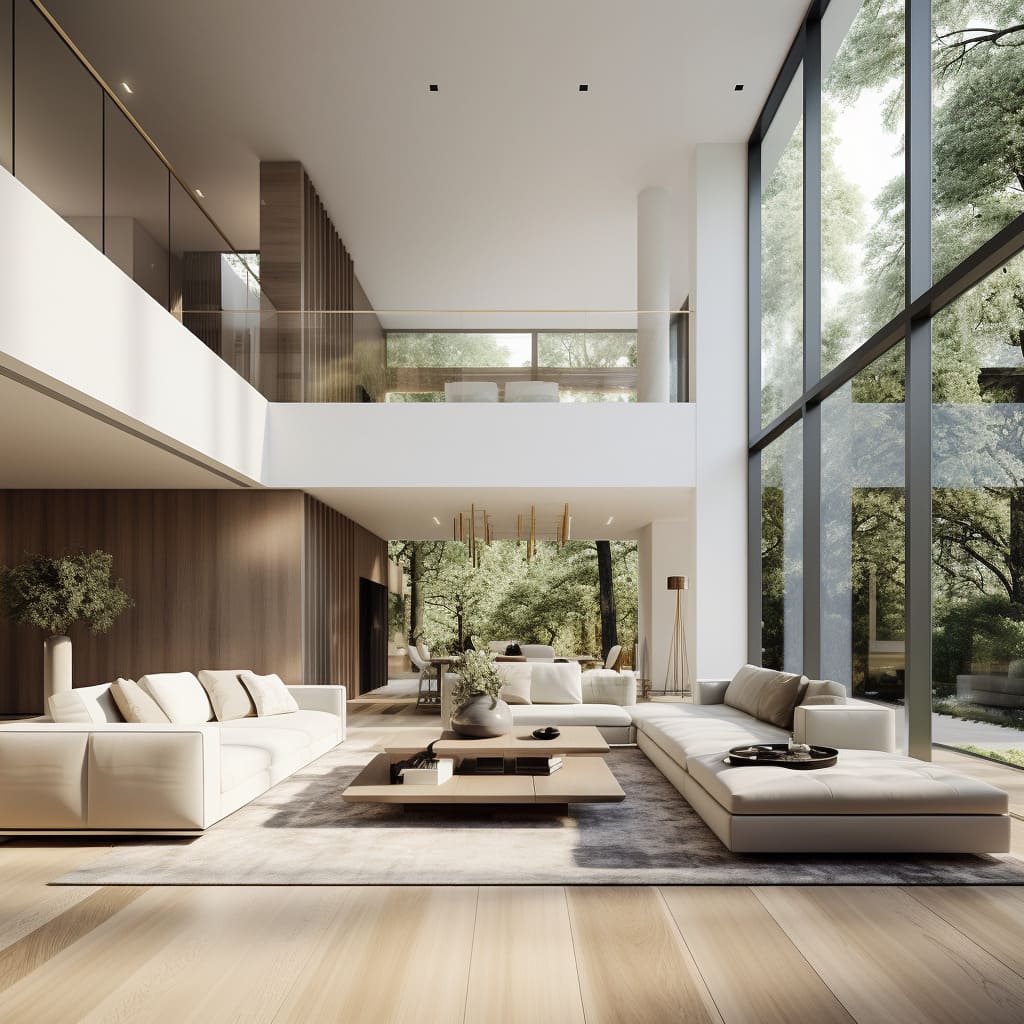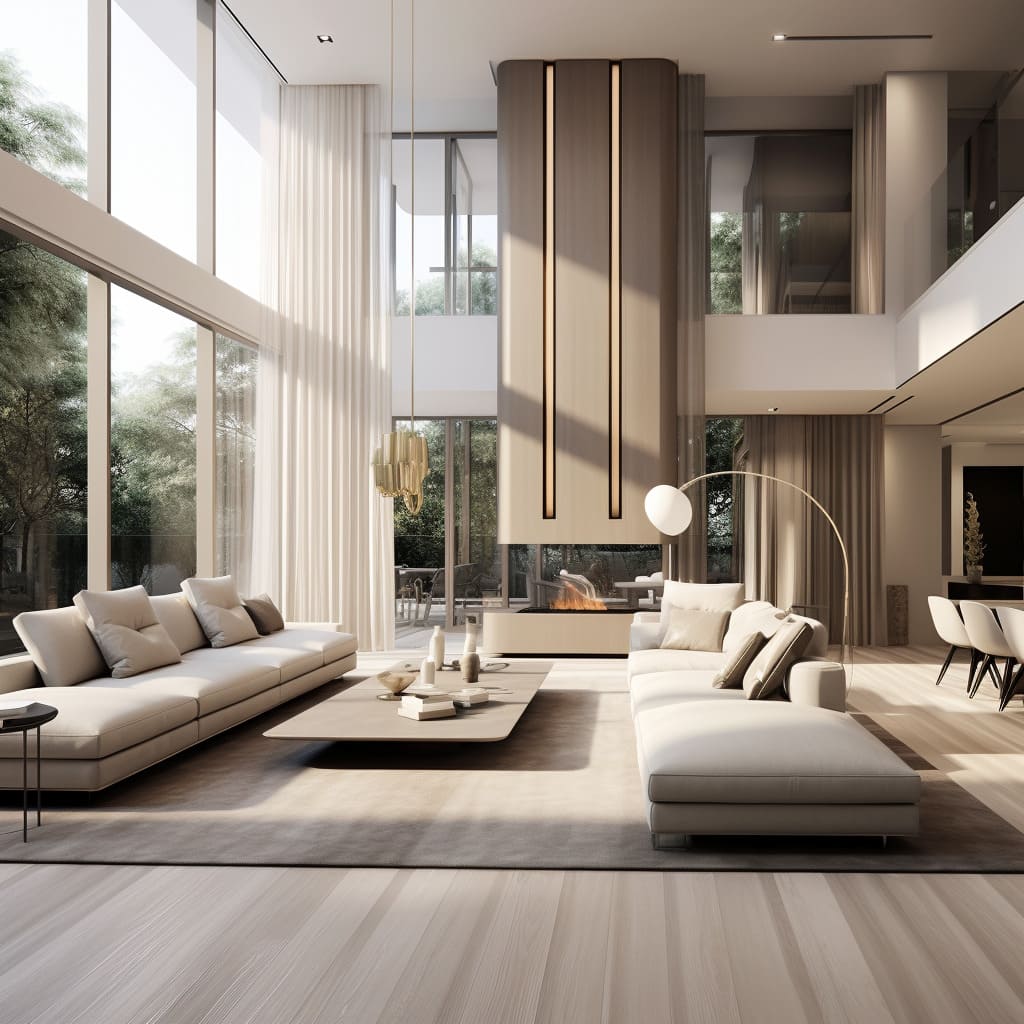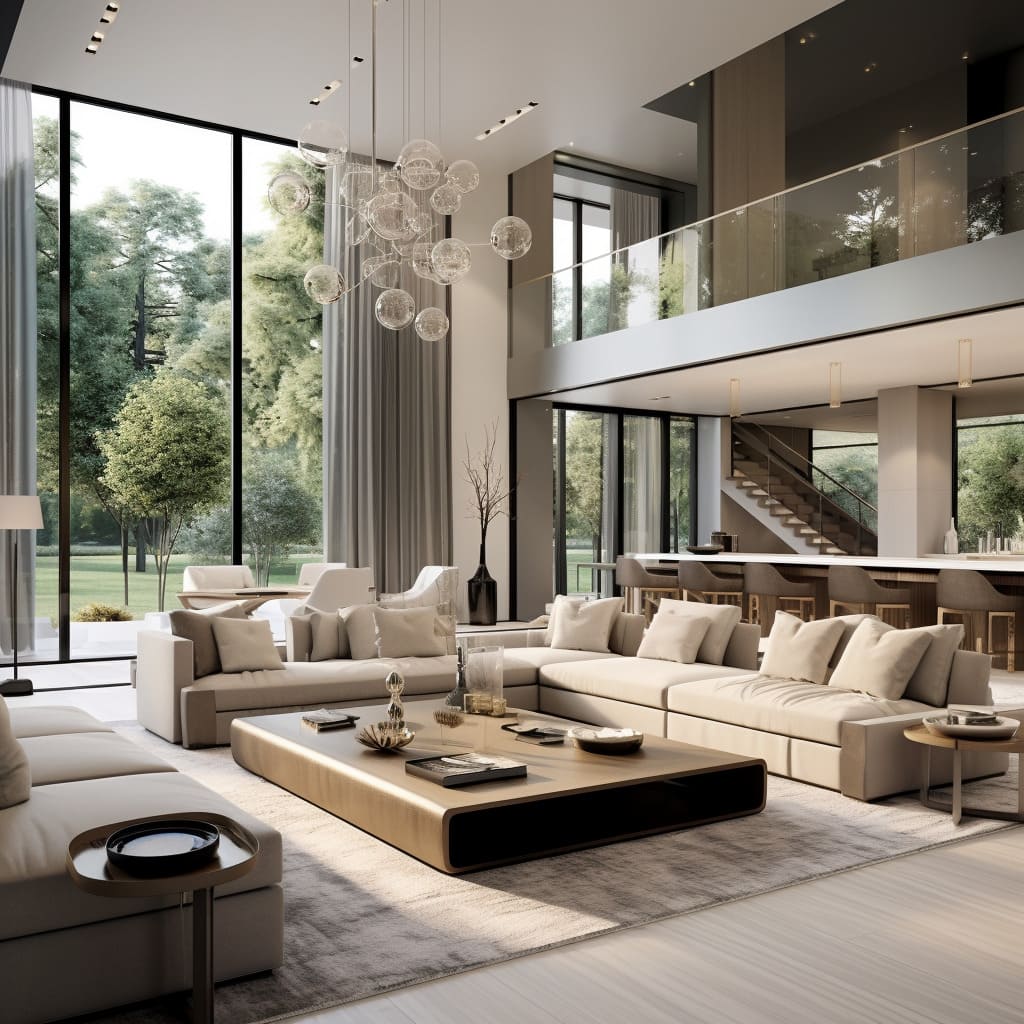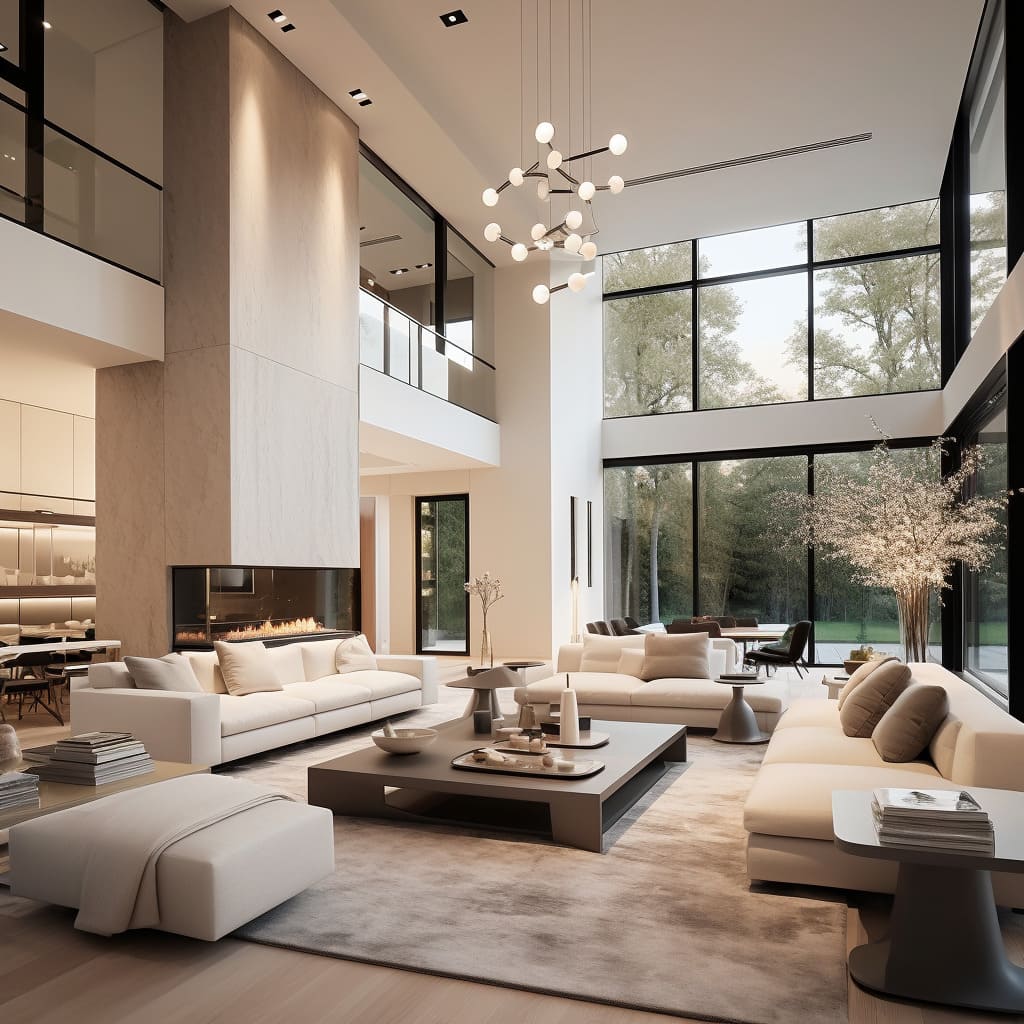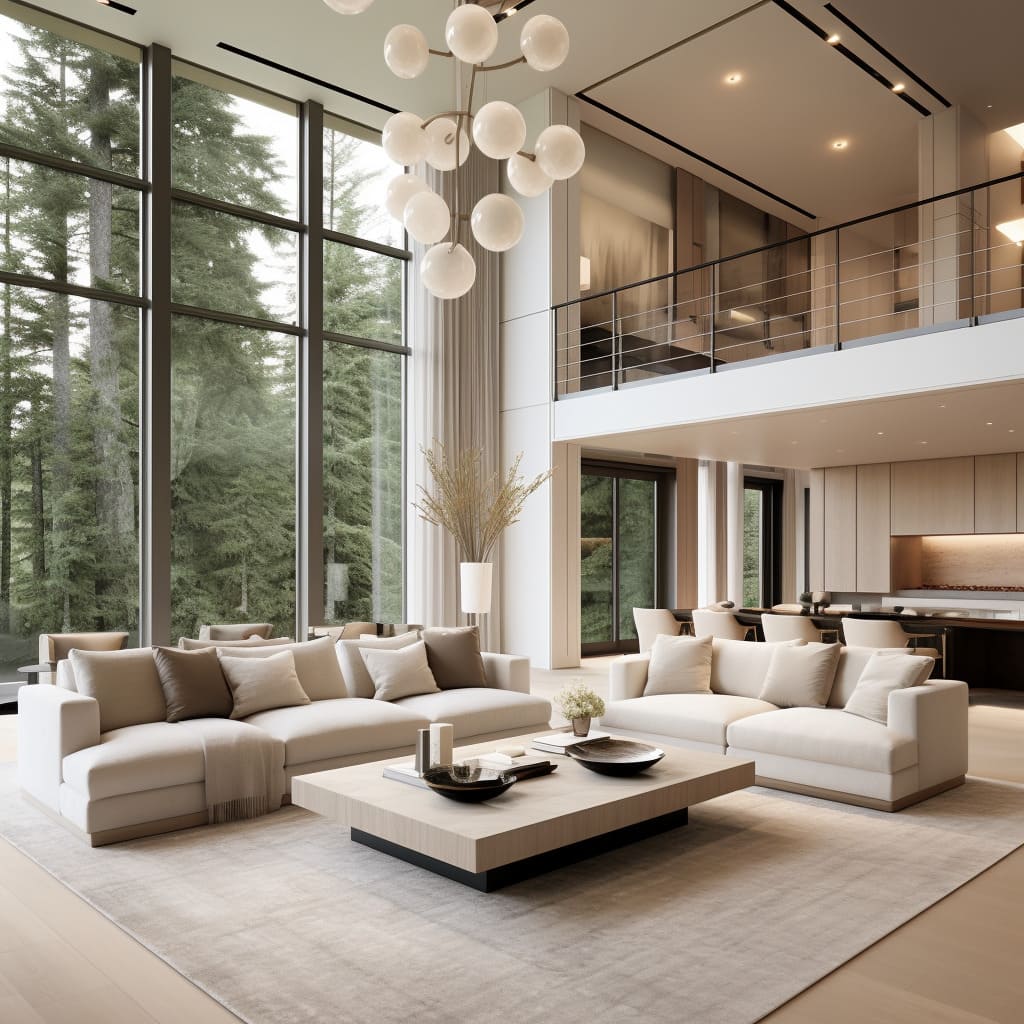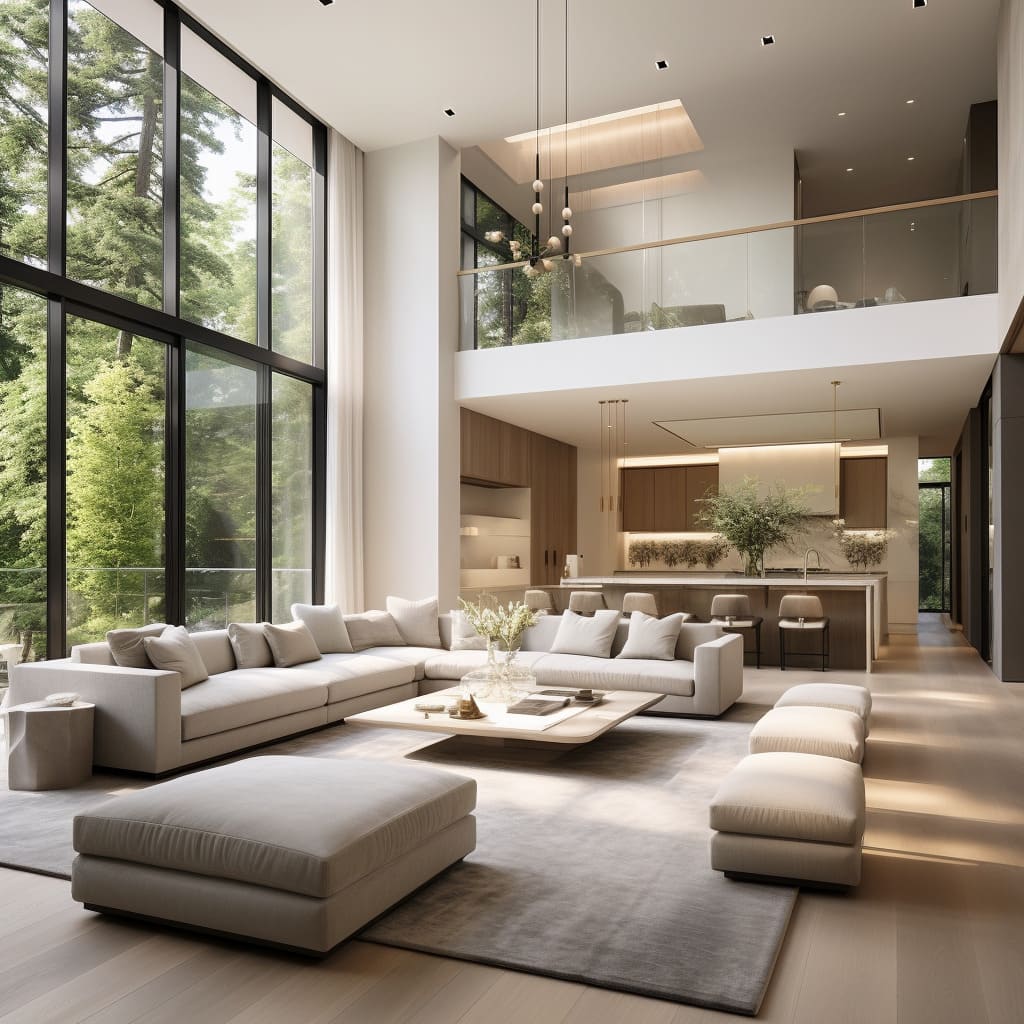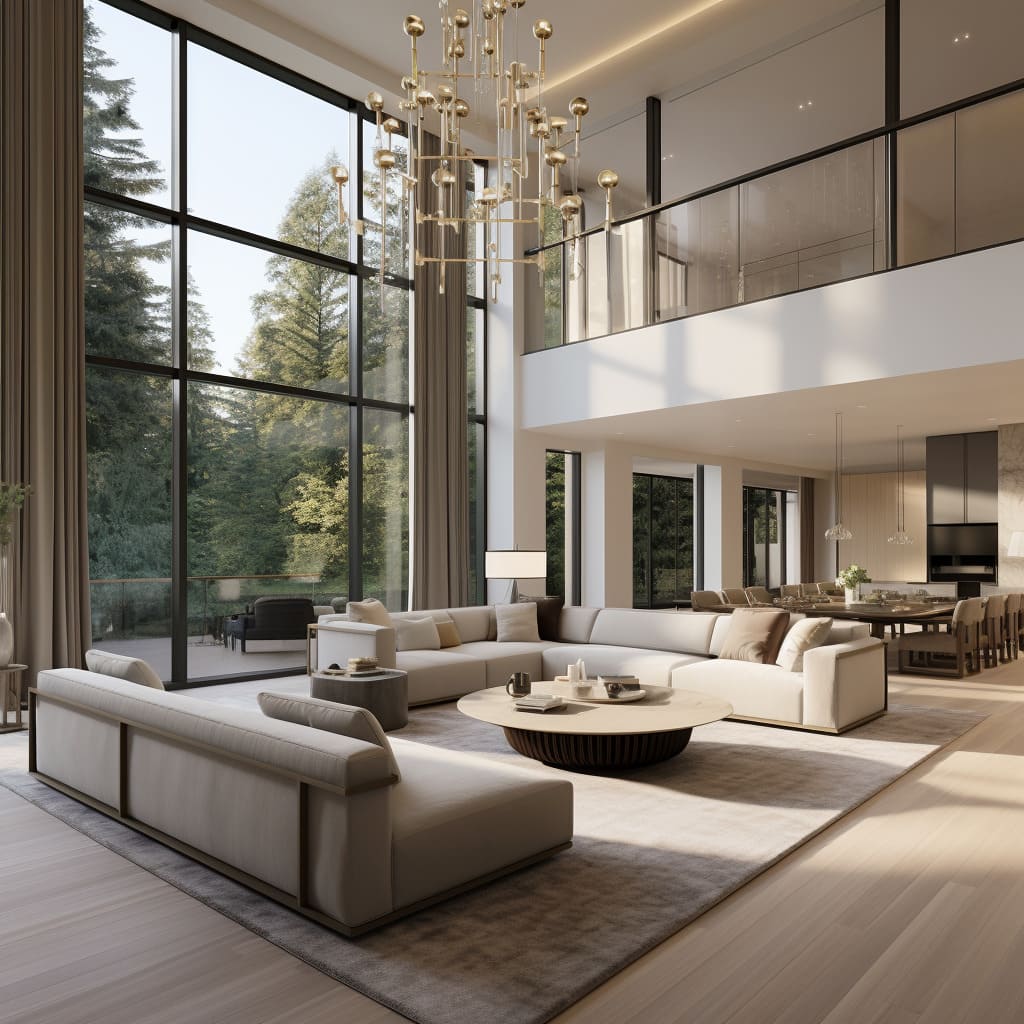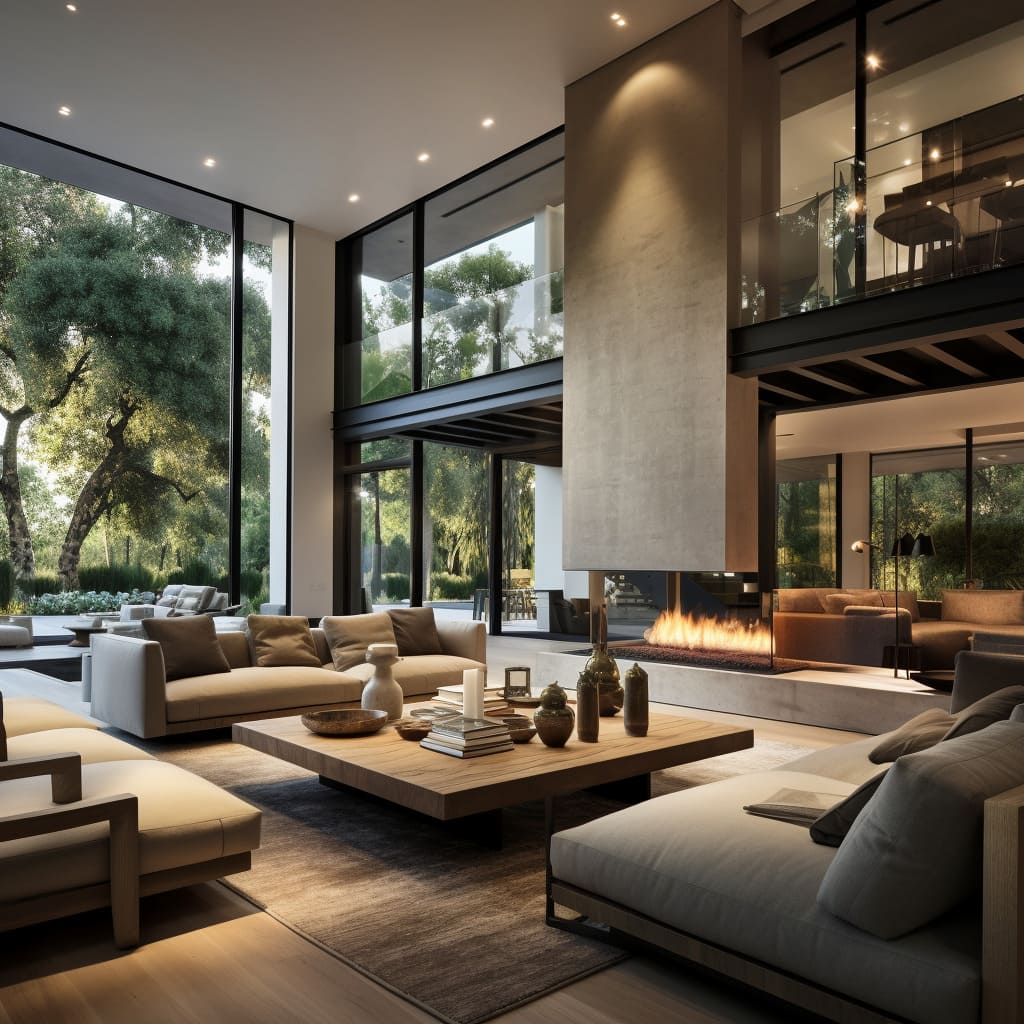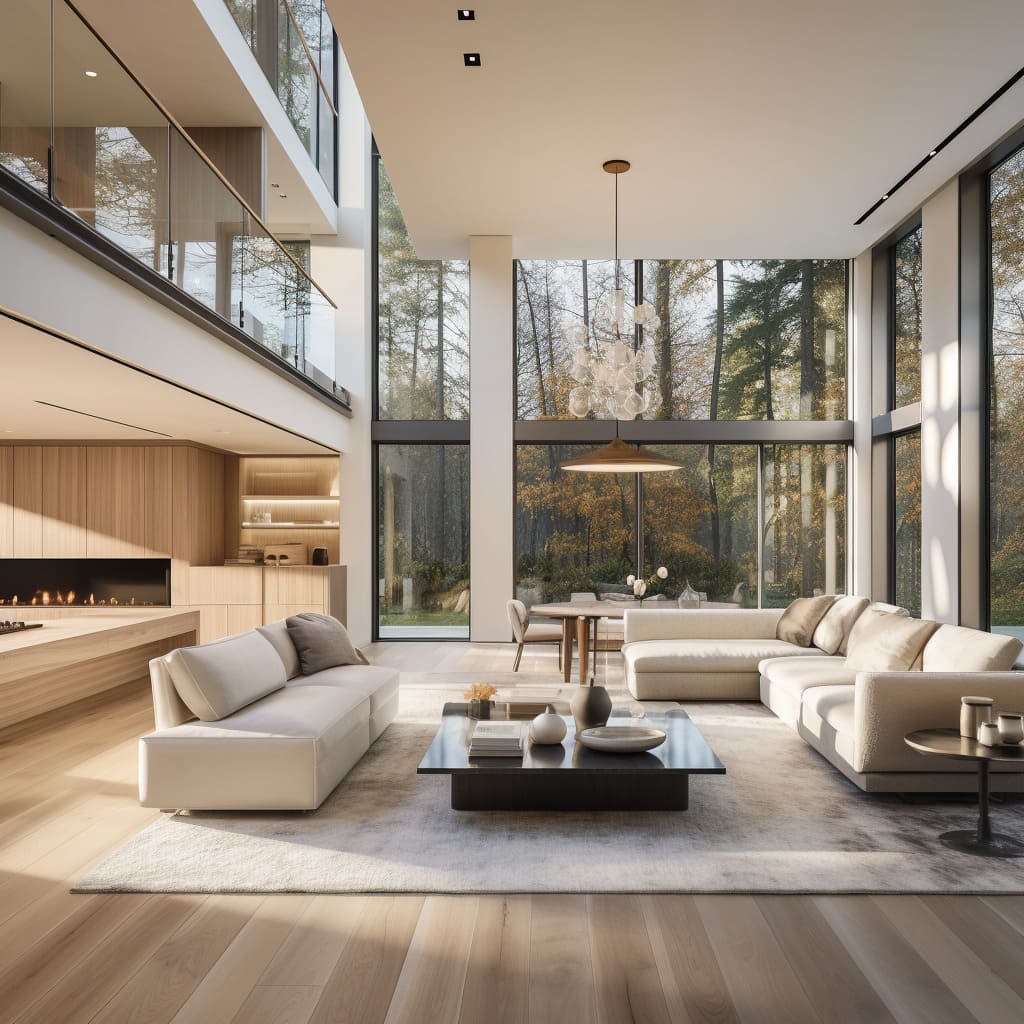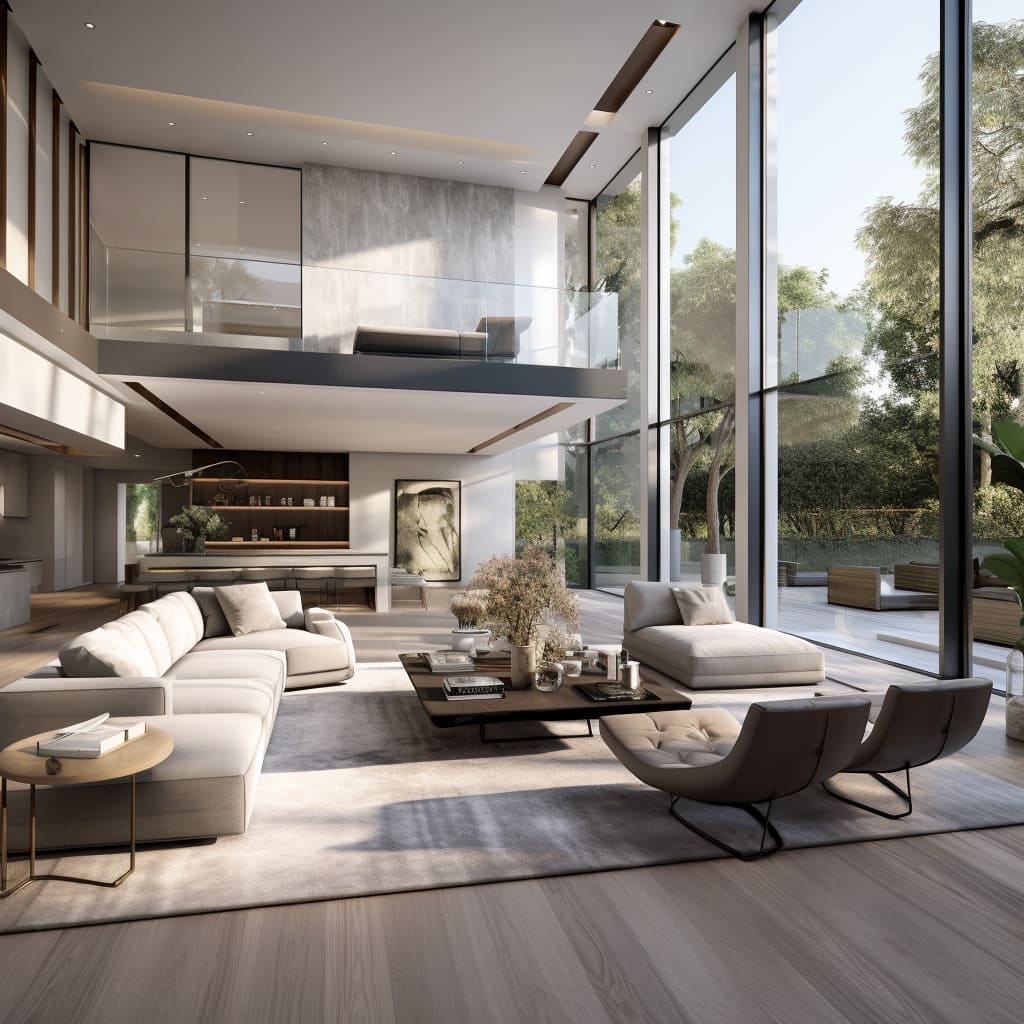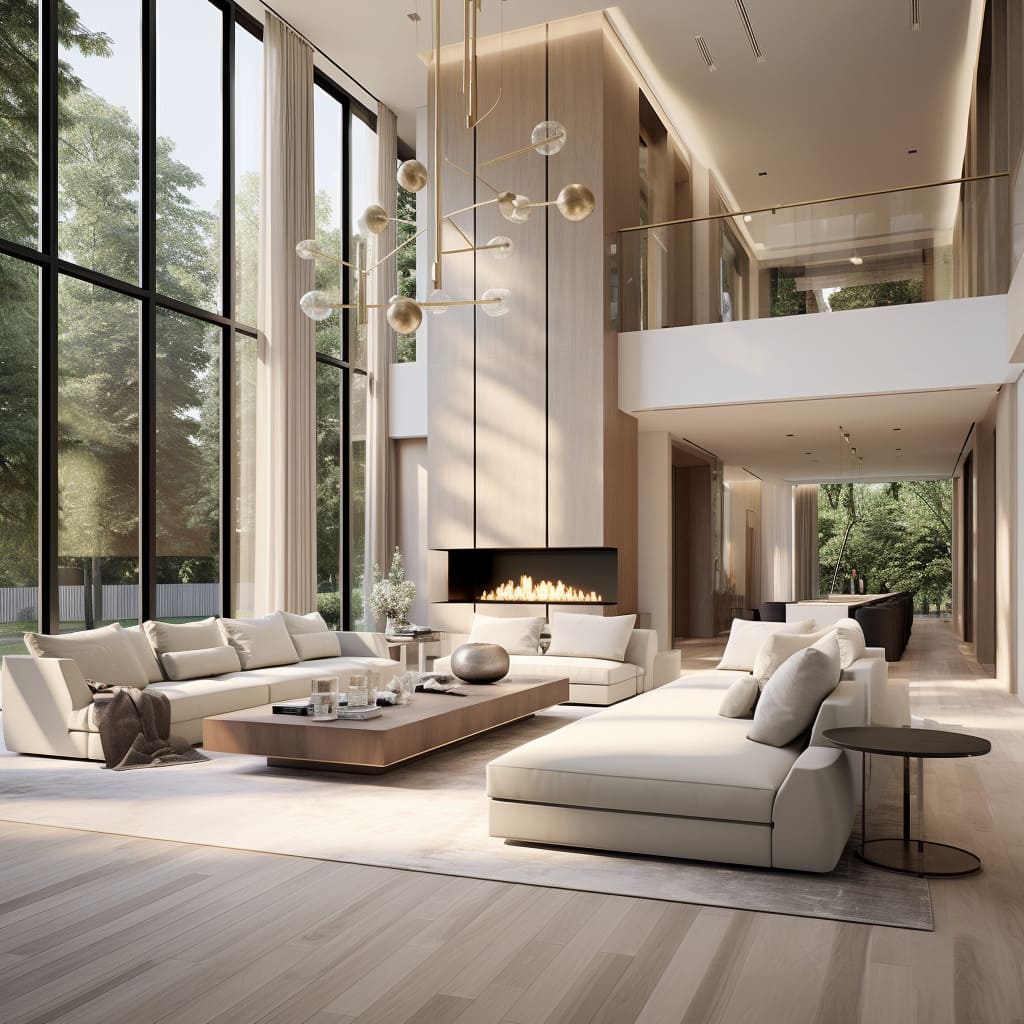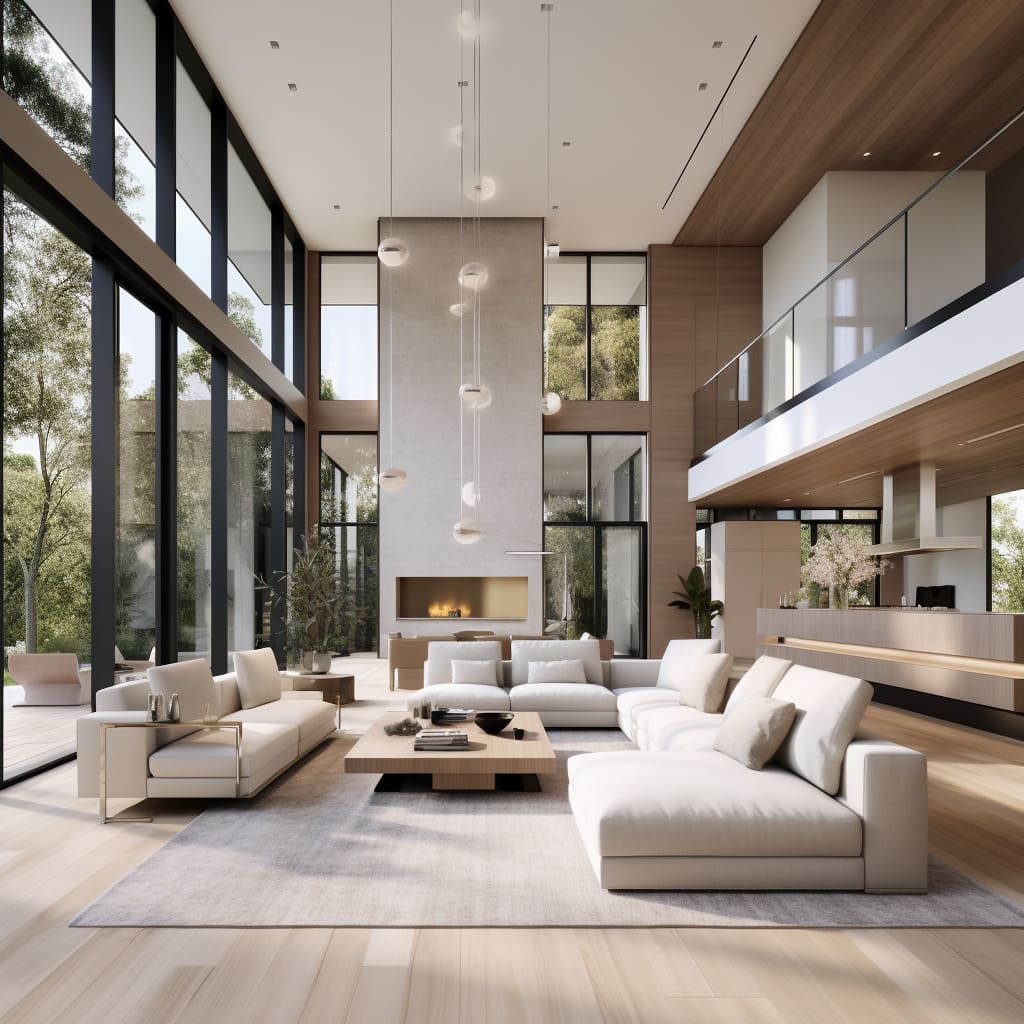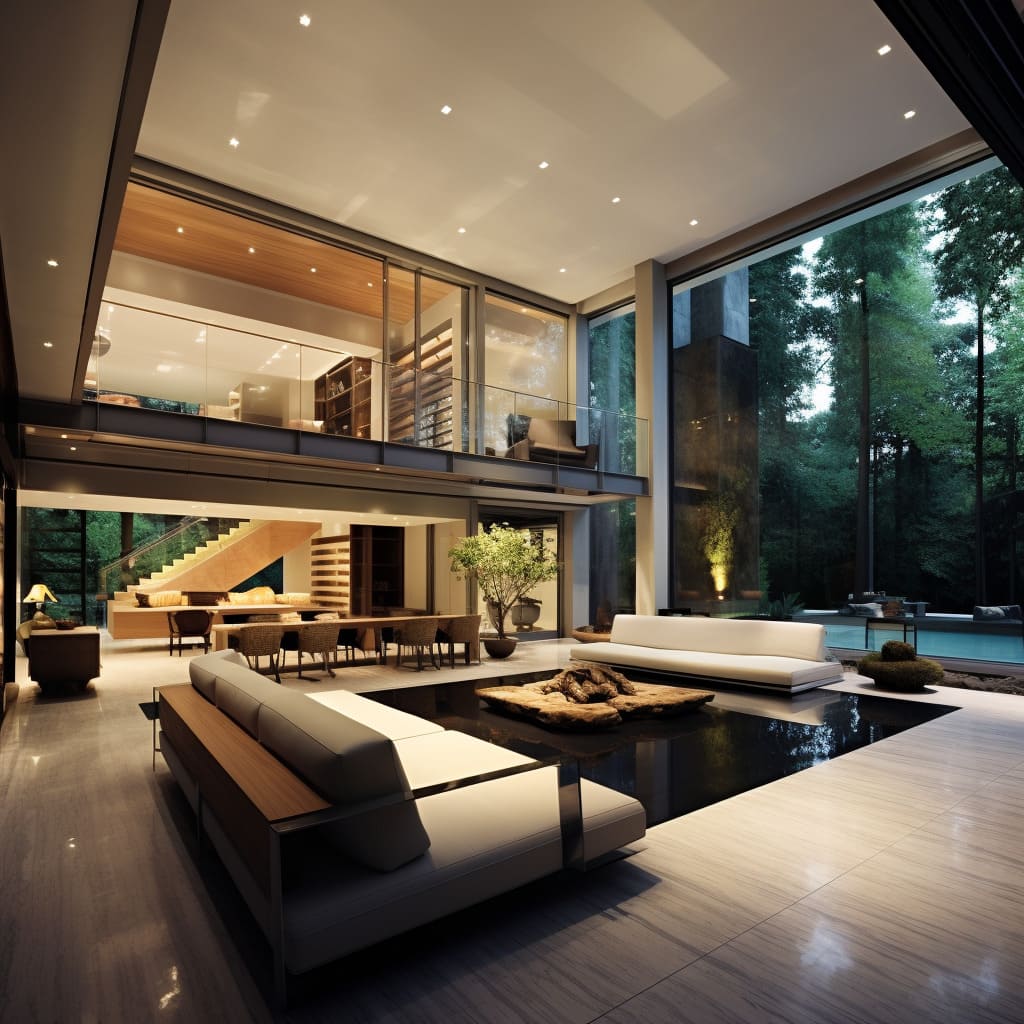In contemporary interior design, minimalism has emerged as a guiding principle, characterized by its emphasis on simplicity, functionality, and elegance. This article delves into the various aspects of minimalist interior design, exploring how each element contributes to creating a space that is not only aesthetically pleasing but also practical and harmonious.
From the clever use of open-plan layouts to the strategic placement of furniture and lighting, minimalist design is about more than just the absence of clutter—it’s a thoughtful approach to living spaces that enhances the quality of daily life. Through this exploration, we uncover how minimalist design principles are applied in various components of a contemporary home, offering insights into the creation of spaces that are both serene and sophisticated.
Furniture in Modern Spaces
Contemporary minimalist interiors often feature a cohesive furniture set that radiates understated luxury. This ensemble is defined by its clean lines, subtle elegance, and a neutral color scheme that blends seamlessly with the room’s design.
At the heart of these spaces is typically a low, oversized coffee table. This large table serves as both a practical surface and a striking focal point.
It’s usually crafted from high-quality, light-colored wood and has a simple, rectangular shape, offering ample space for various items.
Surrounding this central table are sleek, modern sofas and daybeds, clothed in neutral shades from beige to soft brown. Their modular design allows for flexibility in arrangement, adapting to different needs and occasions.
These seating options are not just stylish with their clean silhouettes and tailored upholstery, but also comfortable, thanks to their plush cushions.
The main seating is enhanced by additional elements like side tables and lounge chairs, all adhering to the minimalist theme with their straightforward geometric shapes and lack of unnecessary details. These pieces are strategically placed to encourage conversation and interaction, while also ensuring clear views of the outside.
The Elegance of a Central Fireplace
In minimalist interior designs, a central fireplace often becomes the star. It’s not just a source of warmth but a key element that brings the whole room together.
Such fireplaces are tall and sleek, usually stretching up high across a two-story wall. They are often encased in marble, which adds a touch of luxury.
This marble is usually white with gentle veins, matching the room’s neutral colors and adding a natural pattern.
The fireplace’s clean lines and rectangular shape anchor the room. Its fire pit is long and sometimes raised, doubling as a spot for seating or displaying decor.
The marble around the fireplace reaches up to the ceiling, making the room feel taller and more spacious. This feature isn’t just for looks.
It warms the room and creates a cozy feel, especially during cold months. It’s placed in the center, seen from different parts of the house, making it a perfect spot for gathering.
Furniture around the fireplace encourages socializing, with seats facing this warm centerpiece. This layout invites people to relax and chat.
The simplicity and elegance of the fireplace mirror the overall theme of minimalist design, where every item is both useful and chosen for its contribution to the room’s calm and luxurious feel
Illuminating Minimalism
In contemporary minimalist interiors, a notable feature is often the striking lighting installation cascading from the ceiling. This feature typically includes a cluster of pendant lights, resembling the delicate forms of dandelion heads or sea urchins.
These lights, hanging at various lengths, create a dynamic and organic centerpiece, adding vertical dimension to the space.
The pendants are usually crafted from a fibrous material like paper or thin, translucent fibers, casting a soft, diffused light. This lighting provides a warm, inviting ambiance, complementing natural daylight streaming through windows.
Their neutral, off-white color merges effortlessly with the room’s color scheme, while the texture adds visual intrigue and a whimsical touch to the minimalist setting.
These lights are strategically arranged to fill the high ceiling space, connecting the living area to the upper level. This not only makes a decorative statement but also unifies different parts of the home.
Positioned above the central seating area, they anchor the living space, enhancing its importance as a gathering spot.
The Open-Plan Kitchen and Living Area
Modern minimalist homes often showcase an open-plan layout, where the living space flows seamlessly into the kitchen. This design eliminates walls, fostering a smooth transition between areas.
A key element in this setup is the large central island in the kitchen, offering ample space for cooking and socializing. It typically includes a sink and cooking area, making it both a functional workstation and a casual gathering spot.
The kitchen’s cabinetry mirrors the minimalist theme, with sleek, handleless units that present a tidy, uncluttered appearance. These cabinets are usually in a light color, harmonizing with the living area’s neutral tones and enhancing the continuity between the spaces.
Task lighting is often strategically placed above the island, either recessed into the ceiling or integrated into a discrete design. This lighting is essential for cooking tasks and also accentuates the island as a focal point in the kitchen.
This open-plan approach promotes interaction between the kitchen and living area, ideal for entertaining or family life. It allows those cooking to stay connected with guests or family members in the living area, creating a more inclusive and sociable environment.
Integrating Dining Spaces in Minimalist Interiors
In contemporary minimalist homes, the dining area is smoothly integrated into the living space, yet distinct within the open-plan layout. This space is typically centered around a simple, elegant dining table, accompanied by matching chairs that align with the room’s neutral color scheme and minimalist design.
The table is often made from high-quality materials like light wood or wood veneer, adding a subtle warmth to the area. Its sleek design, devoid of unnecessary embellishments, echoes the modern, clean lines prevalent throughout the room.
Chairs upholstered in colors matching the table contribute to a unified look. They are designed for comfort while upholding the minimalist aesthetic.
The placement of the table and chairs allows diners to enjoy views from large windows, enhancing the dining experience.
Pendant lights often hang above the dining table, providing focused lighting that anchors the dining space within the larger room. These lights highlight the dining area as a central function of the space.
A sideboard or console usually sits adjacent to the dining table, offering extra storage and a place for decorative items or serving dishes. This furniture piece maintains the clean lines and high-quality finishes seen in other parts of the room, further defining the dining area as both functional and thoughtfully arranged.
Warmth in Minimalism: The Role of Wood Paneling
Minimalism in Contemporary Home Design
The wood typically has a rich, warm hue, possibly from a hardwood variety, and features a vertical grain. This grain pattern elongates the walls and draws the eye upward, enhancing the perception of space height.
his continuity of wood from the wall to the ceiling not only adds architectural interest but also creates a sense of cohesion
It gives the large, open space a cozier, more intimate feel, and subtly separates areas like the kitchen and upper floor from the rest of the living space without physical barriers. Wood paneling in modern interiors affects the room’s acoustics.
The softer surface of wood can absorb sound, making the open area less echoey. This thoughtful use of materials shows a consideration for both the aesthetic and functional aspects of the space, contributing to the overall ambiance and comfort of the home.
Streamlined Storage
Built-in shelving and cabinetry serve as both functional and aesthetic elements, adding depth and character to the space. These storage solutions are smoothly recessed into walls, creating a seamless look that complements the room’s minimalist style.
The shelving, often crafted from warm-toned wood that echoes the paneling found throughout the house, maintains design continuity. Shelves are typically arranged horizontally in a clean manner, allowing for the tasteful display of items like vases, bowls, and books.
This open shelving adds a personal touch without contributing to clutter.
Below the open shelves are closed cabinets, providing hidden storage for items that aren’t meant for display. This helps maintain the clean, uncluttered essence of minimalist design.
Warm lighting within the shelving unit not only highlights the displayed objects but also adds to the room’s ambient light, creating a cozy atmosphere in the evening.
This built-in unit demonstrates careful consideration of the interior’s functionality. It offers a balance of accessible storage and visually pleasing display space.
The unit’s placement within the room is strategic, intended to draw the eye and contribute to the home’s overall luxurious feel.
This journey through the elements of contemporary minimalist interior design highlights the art of creating spaces that are both beautiful and functional. We’ve seen how every aspect, from furniture and lighting to shelving and spatial layout, plays a crucial role in achieving a minimalist aesthetic.
The design philosophy goes beyond mere visual appeal, addressing aspects of comfort, functionality, and personal expression. By prioritizing simplicity, clean lines, and a harmonious color palette, minimalist interiors offer a tranquil yet luxurious living environment.
These spaces reflect the modern inclination towards less clutter and more quality, showcasing how minimalism can transform a house into a peaceful, elegant home.
The art of minimalist living, as revealed through these design principles, is not just about the space we inhabit but also about the lifestyle and tranquility it fosters.

